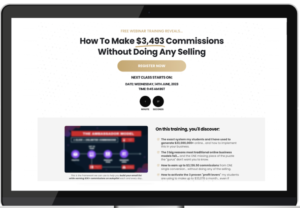vmg
Latest Google SEO Strategies Revealed


Are you struggling with getting your website noticed in Google search results? Google’s latest SEO strategies can help improve your site’s visibility. This article will guide you through the newest tips and tricks to boost your ranking.
Keep reading to unlock better search engine optimization for your site!
Understanding Google’s Algorithm Updates

Google frequently updates its algorithm to improve search results. These changes impact how websites are ranked and perceived by users and crawlers.
Overview of recent updates

March 2024 saw a core update that took 45 days to complete. This change affected many websites’ Google ranking positions, impacting their organic traffic. December 2023 included an “openness” local search update which aimed to enhance how local businesses appear on search engine results pages (SERPs).
The November 2023 reviews update focused on improving the quality of review content.
October 2023 introduced a significant spam update designed to combat black hat SEO techniques and spamming practices. In May 2023, the topic authority system was updated, refining how crawlers assess page expertise and trustworthiness.
August 2023 delivered another core algorithm adjustment affecting page rankings across various niches.
SEO is like a resume, you polish it so you have your best foot forward.
Impact of updates on SEO practices

The recent updates to Google’s algorithm have dramatically impacted SEO practices. The March 2024 core update, for example, slashed unhelpful content by a staggering 45%. This forced digital marketers and SEOs to prioritize high-quality content that genuinely helps users.
Core updates can take up to a month to complete, meaning websites might see significant changes in their search engine rankings over time.
These algorithm changes led many companies to reevaluate their SEO strategies. Multiple businesses experienced fluctuations in traffic and revenue as Google indexed new content based on the latest criteria.
Following industry experts like Marie Haynes and Barry Schwartz became crucial for staying informed about best practices. Staying adaptable helped SEOs manage shifts effectively, ensuring that they remained competitive in an ever-evolving online landscape.
Key SEO Strategies Post Latest Updates

Focus on improving your website’s credibility by emphasizing expertise and trustworthiness. Ensure your site loads quickly and is optimized for mobile devices to attract more visitors.
Optimizing for E-E-A-T (Expertise, Experience, Authoritativeness, Trustworthiness)

Creating content with strong E-E-A-T enhances your page’s credibility. Expertise means showcasing that the author knows their field well. Experience comes from demonstrating practical, hands-on knowledge in the subject matter.
Authoritativeness reflects the respect and recognition from other sites and entities like Google News or online communities. Trustworthiness focuses on giving users reliable, factual information that they can depend on.
High-quality content should be easy-to-read, organized, unique, up-to-date, helpful, and focused primarily on people. Sites need to avoid keyword stuffing while writing useful articles and blog posts that answer user queries accurately.
Using authoritative sources bolsters trustworthiness. Follow best practices for search engine optimization (SEO) by making sure mobile devices display your site correctly.
Trust builds slowly but falls rapidly.
Importance of high-quality content
High-quality content holds immense value for any website. Engaging and useful posts make a site interesting to users, boosting overall page views and time on page. Google often rewards compelling content with higher search rankings, improving discoverability.
Using relevant keywords like “Google algorithm” or “SEO strategy” in your articles can enhance the site’s performance in search results.
Avoid overly distracting ads as they can frustrate visitors and increase bounce rates. Instead, link to valuable resources that provide additional information aligned with user intent.
This not only enhances the user experience but also helps search engines understand how your content fits within the broader web ecosystem. Employing these practices ensures consistent traffic while meeting Google’s latest SEO standards.
Mobile optimization
Mobile optimization is crucial for SEO success. Google’s latest updates emphasize its importance. Websites must be user-friendly on smartphones and tablets to rank well in search results.
Google’s algorithm favors sites optimized for mobile, affecting their page ranking.
Ensure fast load times and a responsive design that adapts to different screen sizes. High-quality images compressed for quicker loading can also improve mobile performance. Mobile optimization isn’t just about looks—it’s essential for better engagement, higher click-through rates, and improved reputation online.
Prioritize this aspect of SEO strategies to stay ahead in Google searches.
Enhancing Site Structure for Better SEO

A well-organized site structure makes it easier for search engines to crawl and index your pages. Use clear, descriptive URLs to improve user experience and rankings.
Using descriptive URLs
Descriptive URLs improve user experience and search engine understanding. They give a clear idea of the page content, which helps users decide if the link meets their needs before clicking.
This boosts click-through rates and reduces bounce rates.
Grouping topically similar pages enhances clarity for both users and crawlers. For example, using “example.com/seo-tips” instead of “example.com/page1” aids in better indexing by Google algorithms.
As a result, your site ranks higher on Search Engine Results Pages (SERPs).
“A good URL is like a great headline; it tells you exactly what to expect.”
Organizing content thematically
Using descriptive URLs is crucial, but organizing content thematically truly enhances user experience. Grouping related information together makes it easier for visitors and search engines to understand the site’s structure.
This method helps Google crawl the web more efficiently. For instance, a website about digital marketing could categorize content into “SEO Tips,” “Content Marketing Strategies,” and “Social Media Platforms.”.
Reducing duplicate content also improves site organization. Canonical URLs help prevent issues with repeated material by specifying which version of a page should appear in search engine results pages (SERPs).
High-quality, thematic organization signals trustworthiness and expertise to both users and search engines, boosting overall pagerank.
Reducing duplicate content
Organizing content thematically can improve your SEO, but reducing duplicate content also plays a vital role. Duplicate content affects user experience and uses up search engine crawling resources.
To avoid this, use canonical tags to highlight the preferred version of web pages. Create descriptive URLs unique for each page.
Evaluate site structure regularly to spot and remove any duplication errors promptly. Use SEO tools like Google Analytics or SEMrush to identify duplicate issues quickly. High-quality writing should be original and provide real value to readers, minimizing the chance of repetition across different pages of your website.
Advanced On-Page SEO Techniques

Optimizing title tags and meta descriptions can significantly boost your search engine rankings.
Optimizing title tags and meta descriptions
Title tags and meta descriptions play key roles in shaping how a site appears in Google search results. Craft title tags that are clear, concise, and less than 60 characters to ensure they fit well on the search engine results pages (SERPs).
Include primary keywords close to the beginning of the tag for better visibility.
Meta descriptions should complement title tags by providing a brief summary of what users can expect from your content. Aim for about 160 characters to avoid truncation. Use compelling language that encourages clicks without being misleading.
This improves both click-through rates and user engagement, leading into strategic use of headers and subheaders next.
Strategic use of headers and subheaders
Title tags and meta descriptions draw users to your content, but headers and subheaders keep them engaged. Headers (H1, H2) and subheaders (H3, H4) break content into manageable sections.
This structure improves readability and helps search engine crawlers understand the page’s hierarchy. Descriptive headers guide readers through the main points while boosting SEO.
Each header must reflect the topic of its section clearly. For instance, using structured keys in “Optimizing Title Tags” makes it clear what readers will learn next. Effective use of headers can also incorporate keywords seamlessly, enhancing Google rankings without keyword stuffing.
Ensuring systematic usage enhances mobile optimization by making your site more scannable for users on smaller screens.
Importance of image and video optimization
Headers and subheaders improve readability, but images and videos add another layer of user engagement. High-quality images should be placed near relevant text with descriptive alt text to enhance accessibility and SEO.
Including key phrases like “alt attribute” in alt texts helps Google understand the image content, boosting your site’s search engine results.
Optimizing videos is essential for better rankings. Videos need high-quality content and dedicated pages with clear titles and descriptions. Using keywords such as “youtube,” “img element,” and “visualizations” in video titles boosts visibility on platforms like YouTube, enhancing your overall digital strategy.
The Role of Artificial Intelligence in SEO

Artificial Intelligence is transforming how sites rank on search engines. It helps in analyzing patterns and predicting trends for better SEO strategies.
How AI is shaping SEO strategies
Google’s AI, such as RankBrain and BERT, helps improve search results by understanding user intent. These tools analyze queries more accurately, matching them with relevant content.
AI focuses on boosting the quality of navigation within websites and elevating the overall user experience. It emphasizes E-E-A-T (Expertise, Experience, Authoritativeness, Trustworthiness), prompting webmasters to prioritize high-quality content.
AI also identifies low-quality or spammy SEO practices quickly. During Google’s updates in October and November 2023, sites using poor-quality AI-generated content experienced a massive drop in organic traffic.
To stay competitive, it’s essential to monitor your site’s data closely after each Google update and make necessary adjustments based on insights from these changes.
Tools and technologies for AI integration
Artificial intelligence is revolutionizing how SEO strategies are developed and executed. Several tools and technologies can help integrate AI into your SEO practices effectively.
- Google Search Central LinkedIn Account
The new LinkedIn account offers valuable news and resources. It helps you stay updated on making your website more discoverable.
- SEO Starter Guide
This guide assists website owners in improving their site’s visibility. AI tools within the guide make content creation and optimization simpler.
- Machine Learning Algorithms
These algorithms analyze vast amounts of data to predict user behavior. They enhance keyword research and identify trends that improve search rankings.
- AI-Generated Summaries
Tools like HubSpot use AI to create summaries for long articles. This makes content easier to read and improves user engagement.
- Natural Language Processing (NLP)
NLP technologies understand and process human language naturally. They ensure your content matches what users are searching for online.
- Image Recognition Software
Tools such as Google Images use AI to analyze and tag images accurately. This boosts image search optimization on your site.
- Chatbots with AI
Integrating chatbots improves customer experience by providing instant responses to queries, which keeps users engaged longer on your site.
- Content Optimization Platforms
Platforms like Clearscope use AI to help optimize content for readability, relevance, and SEO performance based on competitor analysis.
- Automated Meta Tagging Tools
These tools generate meta tags automatically, ensuring all pages have unique tags optimized for relevant keywords.
- Voice Search Optimization Services
As voice search grows, AI tools help tailor content suitable for voice queries, increasing your site’s chances of appearing in voice search results.
Implementing these tools aids in staying competitive with the latest Google algorithm updates while making your SEO strategy more efficient and effective.
Building and Maintaining Site Authority

Creating high-quality backlinks is essential for boosting your site’s authority. Enhance reputation by engaging with thought leaders and influencers in your industry.
Link building strategies
Link building is crucial for improving your site’s authority. It helps in achieving better search engine rankings by increasing the number of quality backlinks to your website.
- Broken Link Building
Identify broken links on other websites. Contact the site owner and offer your link as a replacement. This method benefits both parties: you get a new backlink, and the site owner fixes a broken link.
- Competitor Analysis
Use tools like SEMrush to analyze competitors’ backlinks. Identify where their links come from and reach out to those sites to request similar backlinks.
- Guest Blogging
Write high-quality articles for reputable blogs in your niche. Include a link back to your site within the content or author bio.
- Evangelist Method
Build relationships with influencers and subject matter experts who can mention or link to your site. Share their content, engage with them on social media, and eventually pitch your ideas for collaboration.
- Resource Page Link Building
Search for resource pages related to your industry or niche. Reach out to the owners of these pages and suggest adding your site as a valuable resource.
- Reciprocal Links
Exchange links with related but non-competing websites. Both sites benefit from increased traffic and improved SEO rankings.
- Content Marketing
Create and share engaging content such as infographics, comprehensive guides, or research studies that others find valuable enough to link back to.
- Directory Submissions
Submit your website to reputable directories like DMOZ or BOTW.org for an easy way to gain trusted backlinks.
- Social Media Engagement
Share your content on platforms like Twitter, Facebook, Instagram, Pinterest, Reddit, Bing, WhatsApp, and Google+. Engage with users through comments and shares to increase visibility and attract natural backlinks.
- Forum Participation
Participate in forums relevant to your niche by contributing valuable insights and linking back to relevant pages on your site where appropriate without spamming.
Managing and enhancing site reputation
Maintaining a strong site reputation requires addressing real user needs. Build your brand by focusing on genuine interactions and high-quality content. Google values websites that users trust, so avoid spam links and link farms.
Regularly monitor data for problems that arise from updates to maintain authority. Using tools like Google’s Manual Action report page can help you spot penalties early.
Diversify traffic sources through pay-per-click ads, email campaigns, social media referrals, and organic SEO efforts. This reduces the impact of sudden algorithm changes on your site’s performance in search engine results pages (SERPs).
Check your site’s backlinks regularly using the Disavow Links tool to ensure no harmful links affect your ranking negatively.
Monitoring SEO Performance

Use tools like Google Analytics to track your SEO progress. Analyze data regularly to spot trends and areas for improvement.
Tools for tracking SEO progress
Tracking your SEO progress is crucial for understanding the effectiveness of your strategies. Several efficient tools can help you monitor and improve your website’s performance.
- Google Analytics:
- Provides comprehensive data on visitor behavior.
- Tracks metrics like bounce rates, session durations, and traffic sources.
- Helps identify which content performs best.
- Google Search Console:
- Monitors site health and search performance.
- Reports on crawling issues and indexing status.
- Shows keywords that drive traffic to your site.
- SEMrush:
- Offers insights into organic search positions.
- Analyzes competitors’ strategies and backlinks.
- Tracks keyword rankings over time.
- Ahrefs:
- Provides a detailed backlink profile analysis.
- Displays top-performing pages based on organic traffic.
- Monitors rank changes for targeted keywords.
- Moz Pro:
- Features a robust keyword research tool.
- Tracks local rankings for mobile searches.
- Alerts you of critical SEO issues that need fixing.
- Screaming Frog SEO Spider:
- Crawls websites to find broken links and duplicate content.
- Generates sitemaps to improve site structure.
- Identifies areas needing optimization for better page performance.
- Serpstat:
- Offers rank tracking with historical data comparison.
- Conducts in-depth website audits covering various SEO factors.
- Analyzes PPC campaigns alongside organic search efforts.
- Ubersuggest:
- Tracks keyword positions daily.
- Suggests new content ideas based on searched terms.
- Audits websites for technical improvements.
Using these tools will help ensure that your SEO efforts are on track, enabling ongoing enhancements tailored to achieve higher search engine rankings and better user engagement.
Analyzing and interpreting SEO data
Analyzing and interpreting SEO data is crucial to improving your website’s performance. Use tools to track and understand key metrics for adjusting strategies effectively.
- Conduct Website Audits:
- Scan for broken links, slow loading pages, and other technical issues.
- Identify areas that might affect site visibility on search engines.
- Utilize tools like Google Analytics and SEMrush to find these problems.
- Track Search Engine Results Pages (SERPs):
- Monitor your rankings on SERPs to see how often your site appears.
- Track keyword performance using search index tools.
- Evaluate Organic Traffic:
- Measure the amount of visitors coming from organic searches.
- Look at trends over time to spot any drops or spikes in traffic.
- Use Heatmaps:
- See where users click on your pages with heatmap tools like Hotjar.
- Understand user behavior to improve page design and navigation.
- Analyze Bounce Rate:
- Check the rate at which users leave after viewing one page.
- High bounce rates may indicate content isn’t meeting visitor expectations.
- Monitor Click-Through Rates (CTR):
- Measure how often users click on your site’s link in SERPs compared to the number of times it appears.
- Low CTRs suggest that meta descriptions or titles need improvements.
- Check Backlinks:
- Review the quality and quantity of sites linking back to yours using tools like Ahrefs.
- Quality backlinks help boost domain authority and improve rankings.
- Examine On-Page SEO Metrics:
- Assess title tags, meta descriptions, headers, image alt texts, etc., for optimization opportunities.
- Measure Page Load Speed:
- Use Google PageSpeed Insights to check loading times on desktop and mobile browsers.
- Faster pages rank higher as they provide better user experience.
- Understand User Engagement Metrics:
– Look at metrics such as session duration and pages per session in Google Analytics.
– Higher engagement indicates valuable content keeping visitors interested.
- Utilize Data Visualization Tools:
– Tools like Google Data Studio transform complex data into visual formats making easier interpretation of results.
Efficiently analyzing this data enables you to adapt your strategy continuously, ensuring that your SEO efforts yield significant returns while staying aligned with Google’s frequent updates.
Preparing for Future Google Updates

Stay updated on Google’s potential changes by subscribing to SEO newsletters. Adapt your strategies quickly to maintain and improve search rankings.
Staying informed about potential updates
Google constantly changes its search algorithms, with 4,725 updates in 2022 alone. Check the Google Search Central blog regularly for news on algorithm tweaks and their effects on SEO.
Their LinkedIn and Twitter accounts provide timely alerts about significant shifts. For more detailed guidance, follow Google’s Help Forum and YouTube Channel which offer expert advice from SEO content specialists.
Use these channels to track updates that can impact your web design or search engine results pages (SERPs). Staying informed helps you adjust strategies quickly to maintain or improve your rankings.
Use tools like bookmarks to save essential resources and domain names relevant to your industry, ensuring you are always one step ahead of potential disruptions.
Adapting strategies in response to changes
Adapting SEO strategies after an algorithm update is essential. Algorithm updates by Google often impact rankings, traffic, and revenue significantly. Observing the changes post-update helps identify any drop in search engine results pages (SERPs).
Follow advice from experts like Marie Haynes or Barry Schwartz to analyze the impact effectively.
Implementing new strategies based on these observations can aid recovery. Enhancing high-quality content and improving mobile optimization can mitigate risks from such updates. Use tools for tracking performance regularly to assess recovery progress and refine your approach accordingly.
Conclusion

Google’s latest SEO strategies are game-changers. Focus on E-E-A-T to boost your site’s credibility. Create high-quality content and optimize for mobile users. Use AI tools to refine your SEO efforts.
Stay updated on Google’s changes to keep ahead in search rankings.
List All Current AI Options And What They Are Best Dor.
Are you overwhelmed by the vast world of artificial intelligence tools? With over 44 image generators and 40 chat assistants available, finding the right AI tool can seem like a never-ending search.
This blog post will guide you through all current AI options, highlighting what they excel in. Get ready to find your perfect AI match!
AI Chatbots
AI chatbots streamline customer interactions and can be leveraged for various purposes. Each option offers unique features that cater to specific needs.
ChatGPT: Advanced conversational capabilities
ChatGPT excels in writing, summarizing, coding, and having conversations. Its skills make it a top choice among AI chatbots in the industry. This model can turn ideas into well-written texts or codes, simplify complex information, and engage users with its conversational abilities.
Using deep learning technologies like GPT-3.5 ensures that ChatGPT understands and generates responses that feel natural.
Zapier’s connection allows ChatGPT to perform tasks automatically, enhancing productivity.
Businesses use ChatGPT for customer service by answering questions instantly. It helps with SEO tools by generating content that drives search engine rankings up. For personal projects or learning new coding languages, this bot offers detailed explanations and solutions.
Thanks to these capabilities, ChatGPT serves a broad audience from marketers to developers seeking efficiency through automation and creativity.
Claude: Content creation and task automation
Claude shines in making content creation easy and automating repetitive tasks. This AI excels at understanding visuals and analyzing documents, turning complex data into clear insights.
Users can rely on Claude to interpret images quickly, a feature that sets it apart for projects needing fast image analysis. With this capability, users can craft engaging visuals or derive valuable information from images without spending hours on manual work.
For task automation, Claude goes beyond simple routines by offering advanced integration with apps and software used in daily business processes. Whether it’s sorting through electronic communications or managing databases, Claude streamlines workflows efficiently.
This makes it an invaluable tool for teams looking to boost productivity while maintaining high-quality output in their digital art creations or when optimizing search engine rankings through SEO optimization strategies.
Bing AI (Microsoft Copilot): Personalized assistance and integration
Microsoft launched Copilot in February 2023, stepping into the future with Bing AI. This groundbreaking tool is more than just a search assistant; it’s your personal helper for daily tasks across various applications of artificial intelligence.
Powered by GPT-4 Turbo, it demonstrates what large language models are capable of when integrated into productivity applications like Microsoft Office and Outlook. Imagine having an assistant that helps you draft emails faster in Outlook and simplifies creating complex Excel formulas.
Bing AI goes beyond typical search engine functions. It customizes its responses to fit your needs, making everything from internet searches to analyzing data easier and more personal.
With its integration into social media platforms and ability to personalize marketing campaigns, Bing AI acts as a bridge connecting you with the vast resources of the web efficiently.
Whether you’re managing email in Apple Mail or gathering insights for targeted keywords, this tool adjusts its recommendations based on your queries and interactions, ensuring relevant results every time.
AI Content Creation Apps
AI Content Creation Apps offer advanced capabilities to generate content efficiently and effectively. They are designed to streamline the process of creating blog posts, product descriptions, and other textual content.
Jasper: Automated blog and product descriptions
Jasper shines as a powerful tool for crafting automated blog posts and product descriptions. Business owners find it incredibly useful because it simplifies content creation. With various writing templates, Jasper aids in shaping content that engages the target audience effectively.
Its ability to generate creative ideas rapidly helps businesses stay ahead in personalized marketing.
With Jasper, the struggle of creating compelling content is greatly reduced, making it ideal for both newcomers and seasoned marketers. This software leverages artificial intelligence (AI) technology to understand customer behavior and craft messages that resonate with internet users across different platforms. Whether it’s website articles or detailed product descriptions, Jasper ensures that every piece of content is customized to meet the needs of its intended readership while optimizing for search engine visibility.
Copy.ai: Streamlined blog post generation
Moving from Jasper’s focus on automating blog and product descriptions, we shift to Copy.ai, a tool that specializes in making the creation of blog posts much simpler. Copy.ai uses advanced AI technology to help writers generate content quickly.
With just a few clicks, users can produce articles ready for publishing. This platform is ideal for anyone looking to create high-quality blog posts without spending too much time writing.
Copy.ai relies on machine learning algorithms to understand and match the style and tone required by its users. Whether you’re aiming for SEO-friendly content or creative stories, this tool adapts to your needs.
It speeds up the writing process while ensuring creativity and originality in every piece produced. For creators who need fast results without compromising quality, Copy.ai stands out as a powerful ally in content generation.
Anyword: AI-driven text optimization
Anyword harnesses artificial intelligence to take your text content to the next level. It uses advanced algorithms to suggest improvements that can boost your click-through rates and overall engagement.
This tool is perfect for marketers and writers looking to refine their messages for better performance online. Anyword analyzes data, understands context, and offers solutions that align closely with search engine optimization (SEO) principles.
This platform stands out by personalizing suggestions based on vast amounts of internet data analysis. Whether you’re crafting emails, blog posts, or social media updates, Anyword provides actionable advice geared toward grabbing attention in crowded digital spaces.
With its focus on AI-driven content enhancement, it makes sure your words work harder for you in achieving desired outcomes.
AI Text Enhancement Tools
AI text enhancement tools offer a diverse range of capabilities to improve writing. From grammar checking to style enhancements, these tools are designed to enhance your writing experience.
Delve deeper into the world of AI-driven text optimization and discover how it can revolutionize your content creation process.
Grammarly: Grammar and style checking
Grammarly stands out as a top tool for checking grammar and enhancing style. This software scans your writing, spots mistakes in spelling, punctuation, and sentence structure, and suggests improvements.
It’s like having an expert editor by your side, guiding you to make your text clear and mistake-free. With Grammarly, users effortlessly polish their documents or emails to perfection.
This AI-driven platform also shines with its ability to rewrite sentences for better clarity or a different tone. Whether you’re crafting a report, an email, or social media posts, Grammarly adapts to offer suggestions that match your intended message.
Its comprehensive writing tools support anyone looking to improve their written communications across various digital platforms.
Wordtune: Sentence rephrasing and clarity enhancement
Moving from ensuring your grammar and style are on point with tools like Grammarly, the next step in polishing your content could involve making sentences clearer and more engaging.
This is where Wordtune shines by offering sentence rephrasing and clarity enhancement features. With its advanced AI-driven rewriting tools, users can effortlessly transform their writing into versions that are correct, concise, and compelling to read.
Wordtune excels in refining text for a broad audience, making it an essential tool for anyone aiming to communicate effectively. Its capacity to enhance clarity ensures messages are easily understood, removing any potential confusion without altering the original meaning of the content.
This capability proves invaluable in various fields such as academic writing, email composition, or even social media posts where clear expression is key.
With Wordtune, enhancing the readability of your content has never been easier or more effective.
ProWritingAid: Comprehensive writing assistance
ProWritingAid goes beyond simple grammar checks. It thoroughly examines your writing to improve your style and clarity. Users get help with synonyms, sentence structure, and readability to make their text engaging and easy to understand.
This app fits anyone looking to polish emails, reports, or creative writing.
This tool also analyzes your document for repeated phrases and passive voice usage, encouraging stronger, more active wording. With feedback on overused words and clarity issues, ProWritingAid ensures your writing is concise and impactful.
For writers aiming for professional growth or students wanting to enhance their papers, this software offers invaluable assistance in refining written communication skills.
AI Video Generation and Editing
AI Video Generation and Editing
– VizSketch: Simplified video creation
– CreatorBox: Professional-grade video editing
– VisualCraft: Advanced video production tools
Descript: Video editing and transcription
Descript is a versatile platform for video editing and transcription. This tool allows users to edit videos with ease, providing features such as audio processing, collaboration options, and automatic transcription capabilities.
The intuitive interface makes it user-friendly, allowing users to focus on enhancing their video content without the complexity often associated with professional editing software.
With Descript’s transcription tools, users can save time by automatically transcribing audio and video files into written text. This feature is particularly beneficial for content creators who need accurate transcripts for their videos or podcasts.
By integrating advanced technology into its platform, Descript enhances the efficiency of video production and content creation workflows.
Descript offers a seamless solution for both video editing and transcription needs.
Wondershare Filmora: Professional video editing
Wondershare Filmora offers advanced video editing tools that enhance the quality of videos to a professional standard. With its user-friendly interface and comprehensive features, it provides filmmakers and content creators with everything they need to produce high-quality videos.
The platform allows for seamless integration of various elements including audio, transitions, effects, and color grading to bring out stunning visuals. Its intuitive design ensures that even those new to video editing can create captivating content effortlessly.
Wondershare Filmora is widely recognized for providing a robust suite of tools specifically tailored towards enhancing the video post-production process.
Runway: Advanced video production tools
Runway offers comprehensive video production features, enhancing the quality of video editing and production. With its advanced tools, Runway provides in-depth customization options for creating professional-grade videos.
From seamless editing to incorporating visual effects, Runway’s capabilities cater to the diverse needs of content creators and filmmakers. By leveraging innovative AI technology, users can expect efficient workflows and high-quality results when using Runway for their video projects.
The versatile tools provided by Runway deliver an array of options such as color grading, motion graphics, and audio enhancement, allowing creators to produce captivating visuals with ease.
Whether it’s refining footage or adding complex effects, this platform is designed to streamline the video production process while elevating the final output.
AI Image Generation
AI Image Generation involves the creation of high-quality visual content through cutting-edge neural networks, offering a variety of options for image synthesis and rendering. These tools can simplify the process of visual content creation and are designed to cater to different artistic and professional needs, ensuring that users can generate captivating images with ease.
DALL·E 3: Creative image synthesis
DALL·E 3, famous for its creative image synthesis capabilities, is a powerful AI tool that excels in high-quality visual content generation. This advanced system enhances visual storytelling and graphic design with its impressive image creation abilities.
The sophisticated technology behind DALL·E 3 allows for the seamless generation of diverse and visually captivating images, making it an invaluable asset for professionals in need of compelling visuals.
This innovative tool leverages neural networks to produce stunning images efficiently. Its cutting-edge features ensure that users can seamlessly create engaging visual content tailored to their specific needs, revolutionizing the realm of image generation.
Midjourney: High-quality visual content creation
Transitioning from DALL·E 3’s creative image synthesis, we move on to Midjourney, offering high-quality visual content creation. This AI tool is renowned for enhancing artistic image rendering and providing advanced image generation tools.
It stands out as a top choice for professionals seeking unparalleled visual content.
Midjourney combines cutting-edge technology with innovative features to deliver exceptional quality in visual content production. Offering a user-friendly interface and comprehensive functionalities, it has become an indispensable tool for digital artists, marketers, and businesses looking to elevate their visual storytelling.
With Midjourney’s capabilities, users can effortlessly create stunning visuals that captivate audiences across various platforms.
Stable Diffusion: Artistic image rendering
Stable Diffusion harnesses advanced technology to produce artistic renderings and high-quality visual content. This AI tool is tailored for enhancing image generation, providing a seamless solution for creating captivating visual content.
Its innovative features make it an ideal option for those seeking creative and sophisticated image rendering capabilities in their projects.
Moving on to the next sub-heading, let’s delve into AI Voice and Music Generators.
AI Voice and Music Generators
Explore AI Voice and Music Generators for your creative projects. There’s a world of opportunities waiting to be discovered!
Murf: Realistic voice synthesis
Murf offers high-quality voice generation, enhancing audio content creation. It is a tool that provides realistic voice synthesis, making it ideal for various applications such as podcasts, audiobooks, and voice-overs for videos.
Murf’s advanced capabilities in creating natural-sounding voices cater to users seeking AI-driven solutions for speech generation.
When used alongside other AI tools like Jasper or Descript (for content creation and video editing, respectively), Murf can contribute to a seamless multi-media content production workflow.
Additionally, it can be integrated with chatbots like ChatGPT to create interactive conversational experiences accompanied by lifelike voices.
Splash Pro: Professional-grade music production
Splash Pro offers advanced music creation tools, providing professional-grade music production and enhancing audio quality. With a user-friendly interface, it caters to musicians seeking high-quality results for their compositions.
The software boasts an array of features designed to streamline the music production process, making it a valuable asset for musicians and producers alike. By leveraging AI-driven technology, Splash Pro empowers users to elevate the sonic landscapes of their projects effortlessly.
Moreover, with its comprehensive suite of tools specifically tailored towards creative professionals in the realm of music production, Splash Pro stands out as a go-to solution within the everchanging world of professional audio editing.
From MIDI composition assistance to advanced mastering capabilities and everything in between – this innovative platform is not only designed to enhance but also simplify intricate tasks associated with creating exceptional soundscapes.
Embracing this technology grants users unprecedented control over their musical creations at every stage of development.
AIVA: AI-composed music creation
Transitioning from professional-grade music production to AI-composed music creation, AIVA offers advanced tools for producing and enhancing audio content. With its AI-driven technology, AIVA enables seamless music composition, catering to the needs of musicians, content creators, and artists alike.
This innovative platform harnesses the power of artificial intelligence to simplify the music creation process, providing users with versatile solutions for generating high-quality compositions effortlessly.
Whether it’s crafting original melodies or refining existing tracks, AIVA stands out as a game-changing tool in the realm of AI-powered audio production.
AIVA’s specialized capabilities empower users to explore new frontiers in music creation by seamlessly integrating cutting-edge AI algorithms with intuitive user interfaces. Evidently designed to enhance creativity and streamline workflows, AIVA is at the forefront of revolutionizing how musical content is ideated and produced.
AI Knowledge Management Tools
AI knowledge management tools streamline information storage and retrieval. They ensure easy access to the required data for enhanced productivity.
Notion AI: Database and content management
Notion AI is a comprehensive tool for managing databases and organizing content. It offers robust features that allow users to efficiently structure and store information, making it an essential platform for businesses and individuals looking to enhance data organization.
With its user-friendly interface and powerful capabilities, Notion AI simplifies the process of handling complex datasets while providing seamless content management tools. This ensures that users can easily access and manipulate their data according to their specific needs.
Moreover, Notion AI’s database management functionality enables users to create tailored systems for storing different types of information such as documents, knowledge bases, project assets, and more.
Its content management tools further enhance these capabilities by allowing seamless integration with various forms of media like images, videos, and text-based content. As a result, Notion AI serves as a versatile solution for effectively structuring information while streamlining the process of accessing and utilizing diverse multimedia resources within one centralized platform.
In addition to this intuitive approach toward database management and content organization objectives in mind – efficiency in data handling backed by advanced system support leads contribute towards effective operations across relevant industrial sectors.
Personal AI: Memory enhancement and recall
Personal AI, which focuses on memory enhancement and recall, plays a crucial role in information retention. By leveraging state-of-the-art technology, it offers users the ability to strengthen their memory capabilities by providing efficient tools for recalling vital details.
Whether it’s remembering complex data or retrieving specific pieces of information, Personal AI serves as an invaluable resource.
Through its robust system, Personal AI not only enhances memory but also optimizes the process of storing and retrieving information. This contributes significantly to improving cognitive functions and overall productivity.
With its user-friendly interface and advanced features designed for seamless interaction, this innovative tool is revolutionizing the realm of knowledge management and mental agility.
Mem: Information aggregation and retrieval
Mem is a leading tool for information aggregation and retrieval. With its advanced capabilities, it stands out as an essential resource in the realm of AI knowledge management tools.
Mem assists users in aggregating data from various sources and provides efficient retrieval tools that enhance data management. Whether it’s research papers, PDFs, or GPT-3 generated content, Mem offers robust features to streamline the process of information gathering and organization.
Moreover, Mem helps researchers analyze data by offering a comprehensive approach to information aggregation. Its user-friendly interface ensures ease of use while managing complex tasks such as text-to-image synthesis and natural language processing.
As a result, individuals gain access to tailored resources designed to enhance their productivity across diverse sectors including link building and computer vision.
AI Task and Project Management
Manage tasks and projects with ease using AI tools that streamline organization and enhance team collaboration. Dive into a world of efficient task organization and project tracking, maximizing productivity and ensuring seamless workflow management.
Asana: Task organization and team collaboration
Asana streamlines task organization and enhances team collaboration. The platform provides project management utilities, facilitating the efficient allocation of tasks and deadlines within a team.
It allows users to create interactive to-do lists, assign tasks, and track their progress in real time.
Furthermore, Asana offers seamless communication tools that enable teams to collaborate effectively. Through features such as comments and file attachments, members can communicate within the platform without having to switch between multiple applications.
This simplifies workflow and ensures that all discussions related to a specific task or project are centralized within Asana for easy reference.
Any.do: Personal task management
Transitioning from task organization and team collaboration tools like Asana, Any.do offers personal task management solutions for individuals seeking to enhance their productivity.
With a range of task organization tools, Any.do is designed to streamline personal activity planning and time management. Users can efficiently organize tasks, set reminders, and take notes with this AI-driven tool.
Any.do underpins its focus on enhancing individual productivity through tailored task management features that simplify the complexities of daily activities without overwhelming the user with excessive features or options.
In addition to providing personalized task management capabilities, Any.do aims to enhance users’ work efficiency by offering seamless integrations with other essential apps and services such as calendars, emails, and notes.
The platform’s intuitive interface and adaptable functionality make it an indispensable solution for those navigating the ever-evolving realm of personal productivity tools.
BeeDone: Project tracking and notifications
BeeDone simplifies project tracking and enhances project management with its notification tools. It ensures seamless task organization and team collaboration, making it a valuable asset for businesses seeking to streamline their operations.
By providing automated reminders and status updates, BeeDone facilitates efficient workflow management and helps teams stay on top of deadlines.
Furthermore, BeeDone offers features designed to enhance productivity by offering personalized assistance in the form of notifications tailored towards individual needs. With BeeDone’s comprehensive suite of project tracking tools, users can effectively manage tasks, keep projects on schedule, and increase overall efficiency within their organizations.
AI Transcription and Meeting Assistants
AI Transcription and Meeting Assistants use cutting-edge technology to enhance productivity and collaboration in meetings. To learn more about these time-saving tools, read on!
Fireflies: Meeting transcription and note-taking
Fireflies provides meeting transcription and note-taking tools, enhancing productivity. With Fireflies, users can efficiently capture and organize key meeting points through automatic transcription.
This AI-powered tool simplifies the process of summarizing discussions, ensuring that essential details are not overlooked.
Furthermore, Fireflies offers advanced note-taking capabilities that enable users to quickly jot down important ideas during meetings for future reference. By leveraging Fireflies’ features, individuals can streamline communication and knowledge-sharing within their teams with ease.
Airgram: Interactive meeting recordings
Transitioning from meeting transcription and note-taking to interactive meeting recordings, Airgram provides a comprehensive solution for enhancing productivity during meetings. Offering advanced transcription tools, Airgram utilizes AI to create an interactive environment that fosters efficient collaboration and seamless communication.
By leveraging its features, users can streamline the process of organizing information, obtaining actionable insights from discussions, and improving overall meeting effectiveness.
Airgram’s innovative approach not only simplifies the task of managing important conversations but also enhances the ability to retrieve valuable data with ease. Through its tailored functionalities for meetings, Airgram underpins a user-friendly interface designed to cater to the complexities of modern workplace interactions.
With its focus on providing an ever-evolving experience in the realm of interactive recording tools, Airgram stands as a robust option for those seeking enhanced meeting productivity in today’s dynamic work environments.
Krisp: Noise cancellation and voice clarity
Krisp employs advanced noise cancellation technology that effectively blocks out background noise during meetings and calls. This tool seamlessly enhances audio quality, ensuring clear and crisp communication.
Whether it’s a busy office, bustling café, or noisy home environment, Krisp delivers exceptional voice clarity by eliminating unwanted sounds. With its intuitive features, the platform is an indispensable asset for professionals seeking seamless communication experiences.
Moving forward to “AI Transcription and Meeting Assistants,” let’s explore how these tools streamline documentation and note-taking during important discussions.
AI Scheduling Tools
AI Scheduling Tools are essential for optimizing time management and scheduling tasks efficiently. They maximize productivity and ensure seamless coordination among team members.
Reclaim: Calendar management
Reclaim simplifies calendar management by offering tools for organizing and scheduling tasks. It enhances productivity by automating reminders and optimizing time allocation. Reclaim is designed to streamline the complexities of ever-changing schedules, providing tailored assistance towards efficient time management.
The next sub-heading will explore another essential AI tool – Clockwise: Optimized scheduling.
Clockwise: Optimized scheduling
Clockwise is a calendar management tool designed to enhance productivity through optimized scheduling. By automating the scheduling process, Clockwise streamlines task management, allowing users to efficiently plan and organize their time.
This AI-powered tool prioritizes essential tasks and meetings, ensuring that users can focus on high-impact activities while avoiding scheduling conflicts. With Clockwise, users can unlock the secrets of effective time management by leveraging its intuitive features tailored towards ever-evolving work demands.
Clockwise’s seamless integration with various calendars and productivity platforms makes it an indispensable asset for professionals seeking more than just basic scheduling assistance.
Its proactive approach tackles the complexities of modern work schedules, providing firsthand experience in managing tasks within a dynamic workplace environment. Leveraging advanced algorithms and machine learning capabilities, Clockwise empowers users to take control of their schedules without diving into the overwhelming realm of intricate planning processes.
In addition to optimizing individual schedules, Clockwise offers robust team collaboration features aimed at enhancing coordination and efficiency within organizations. This functionality equips teams with the tools needed to streamline project timelines and maximize productivity across all levels of hierarchy.
Motion: Task automation and scheduling
Motion stands out as a comprehensive solution for task automation and scheduling, boosting productivity and time management. Whether it’s automating repetitive tasks or streamlining complex projects, Motion offers robust tools to enhance efficiency.
Its user-friendly interface ensures seamless navigation, empowering users to schedule and automate tasks with ease. With Motion at the helm of task management, individuals and teams can streamline their workflows effectively.
Looking ahead, let’s delve into AI Email and Inbox Management to explore how these innovative tools are revolutionizing communication efficiency.
AI Email and Inbox Management
AI Email and Inbox Management tools like SaneBox, Mailbutler, and EmailTree streamline email organization and enhance productivity. They offer features for prioritizing emails, enhancing messages, and providing AI-driven responses.
SaneBox: Email organization and prioritization
SaneBox revolutionizes email management by organizing and prioritizing incoming emails. It streamlines workflows, boosting productivity with its effective filtering system that categorizes emails based on importance.
Through advanced AI algorithms, SaneBox identifies essential messages, ensuring they receive prompt attention while relegating less crucial correspondences to be addressed later. By integrating with popular email platforms like Gmail and Outlook, SaneBox provides a seamless experience for users, enhancing their overall efficiency.
The powerful tools offered by SaneBox not only manage inboxes but also elevate the entire emailing process. With features such as snooze and reminders, users can schedule when they want to deal with specific emails or receive notifications tailored to their preferences.
Moreover, it enhances collaboration by allowing team members to share folders and ensure no vital communications get overlooked within the deluge of daily messages.
Mailbutler: Email enhancement and productivity
Mailbutler is a comprehensive email enhancement tool designed to streamline and optimize email management. By providing a suite of productivity tools, Mailbutler delivers an efficient solution for managing emails effectively.
It integrates seamlessly with various email platforms, allowing users to enhance their email experience effortlessly.
With Mailbutler, users can enjoy features such as snooze emails, send later functionality, and unified inbox across multiple accounts. Additionally, it offers read receipts and tracking capabilities to provide insights into recipient interaction with sent emails.
This makes Mailbutler an indispensable tool for professionals seeking enhanced productivity in their daily communication activities.
EmailTree: AI-driven email responses
EmailTree is a valuable tool that harnesses AI to provide advanced email responses, enhancing productivity for users. The platform offers email management tools designed to streamline communication and prioritize important messages, ultimately optimizing workflow.
With EmailTree’s AI-driven features, users can efficiently manage their inboxes and respond to emails promptly, contributing to more effective time management and overall efficiency in daily tasks.
The implementation of EmailTree’s AI-powered capabilities empowers users with sophisticated email organization options and intelligent response suggestions. By leveraging this technology, individuals can significantly improve their email handling process and maximize their productivity throughout the workday.
AI Presentation and Deck Creation
Create captivating presentations effortlessly with AI-powered tools. Intrigued? Read on for more exciting options.
Decktopus: Simplified slide creation
Decktopus streamlines the creation of slides, providing a user-friendly platform for efficient and visually compelling presentations. It enhances productivity with automated design features, customizable templates, and intuitive tools suitable for various presentation needs.
Decktopus is designed to simplify the process of creating engaging slides while optimizing time and effort invested in presentations.
Additionally, Decktopus offers integrated elements that cater to personalized content requirements, ensuring an impactful and tailored approach towards slide creation. With its focus on simplified slide generation and enhanced visual appeal, users can effectively convey their message through professional-looking presentations without extensive design knowledge or expertise.
Beautiful.ai: Automated design for presentations
Beautiful.ai streamlines the process of creating stunning presentations by offering automated design tools. It enables users to craft visually appealing slides with ease and efficiency, enhancing productivity significantly.
With Beautiful.ai, professionals can save time while ensuring that their presentations are engaging and polished.
The platform provides a range of customizable templates and design elements, allowing users to create impactful visuals without extensive design experience. This makes it an ideal choice for individuals and teams seeking to elevate their presentation quality and deliver compelling content.
Whether it’s sales pitches, company updates, or educational seminars, Beautiful.ai empowers users to produce professional-level presentations effortlessly.
Moving ahead in our discussion is the next subheading on “Slidesgo: Customizable presentation templates”.
Slidesgo: Customizable presentation templates
Slidesgo offers a wide range of customizable presentation templates to help enhance productivity and streamline the creation process. Whether you need to deliver a professional business presentation or a creative school project, Slidesgo’s templates cater to various themes and styles, making it easier for users to create visually appealing presentations.
With user-friendly customization options, these templates can be tailored to specific needs, ensuring that your presentations stand out.
By providing diverse design choices and easy-to-use features, Slidesgo empowers users to create engaging presentations efficiently. The platform’s array of customizable presentation templates caters to different industries and purposes, allowing for seamless integration of content without the hassle of designing from scratch.
Up next: AI Automation Tools
AI Automation Tools
AI Automation Tools streamlines tasks and workflows, enhancing productivity. They integrate applications to automate processes, saving time and effort.
Zapier: App integration and workflow automation
Zapier is a powerful tool that streamlines app integration and enhances productivity through workflow automation. With Zapier, users can connect their favorite apps without any coding knowledge.
It allows seamless flow of data between different web applications, automating repetitive tasks and saving time for more critical work. For example, integrating customer relationship management (CRM) systems with email marketing platforms helps in automatically updating contact information and triggering relevant email campaigns based on specific actions or triggers.
Businesses can use Zapier to create customized workflows that suit their unique needs. This tool enables effortless automation of processes such as lead generation, social media posting, file organization, data backup, and much more.
For instance, when a new lead is added to the CRM system like Salesforce or HubSpot CRM, Zapier can instantly create a task in project management software like Asana or Trello for the sales team to follow up.
Moreover, by leveraging Zapier’s capabilities for integrating various business tools such as Google Workspace (formerly G Suite), Slack, Mailchimp along with thousands of other apps available on its platform businesses achieve efficiency gains by reducing manual effort and human errors.
Conclusion
Explore the wide range of AI tools across different categories: chatbots, content creation, video and image editing, voice and music generation, knowledge management, task and project management, transcription and meeting assistants.
These include ChatGPT for advanced conversational capabilities; Jasper for automated blog and product descriptions; Grammarly for grammar and style checking; Asana for task organization and team collaboration; Decktopus for simplified slide creation.
Boost Confidence: Step-by-Step Guide From Popular Self-Help Authors
Struggling with self-confidence affects many people today. The guide “Boost Confidence: Step-by-Step Guide From Popular Self-Help Authors,” set to release on April 3, 2024, offers solutions.
This article unveils strategies to build confidence quickly and effectively. Boost your self-help knowledge here.
Identifying Your Confidence Challenges

To find out what makes you feel less confident, think about times you felt scared or unsure. These moments can show where your confidence needs work. Maybe speaking in front of people scares you or trying new things feels too hard.
It’s normal to have these challenges. Knowing them helps you get better.
Next, focus on why these situations make you feel this way. Often, fear of failing or worry about what others will think stops us from feeling confident. Keep in mind, everyone has something they’re working on to deserve success.
Seeing your obstacles clearly is the first step towards overcoming them and building stronger confidence for yourself.
Strategies from Top Self-Help Authors
Learn powerful ways to build confidence from leading self-help writers. They share simple steps to turn failures into lessons and set goals you can really achieve.
Embrace Failures as Learning Opportunities
When we make mistakes, it’s not the end. It’s a chance to learn and get better. Top authors who write about self-help say that each mistake teaches us something important. They share that in books like “Self-Confidence: A Comprehensive Guide on How to Quickly Gain Self-Confidence,” coming out April 3, 2024.
This book tells readers that facing failures can help them feel more confident on their path to improvement. Other books such as “How to Gain Confidence” (2014) and “Be More Confident” (2011), share stories of people overcoming obstacles and growing stronger.
“Mistakes have the power to turn you into something better than you were before.”
Also, making small goals helps keep learning from mistakes going.
Set Small, Achievable Goals
When you set small, reachable goals, you start to see your progress and feel more confident. Here’s how to do it:
- Pick one thing you want to get better at. Make sure it is something specific, like public speaking or writing.
- Break down this big skill into smaller parts. For example, if you’re working on public speaking, begin by talking in front of a few people.
- Give yourself deadlines for these small tasks. Deadlines help keep you on track and serious about your goal.
- Cheer for every success, no matter how tiny it seems. Did you finish a talk without messing up? That’s great!
5.Carry around a planner or use an app to keep track of what you need to do and when. It helps you see what you have done already and where else needs work.
6 . At the end of each day, think about three things that went well related to improving your chosen thing.
After setting easy-to-reach goals , next comes practicing saying nice things about yourself and thinking positively to boost confidence even more.
Practice Self-Affirmation and Positive Self-Talk
Practicing saying nice things to yourself and thinking positively can make you feel more confident. Doing this helps shape your mind for success and happiness.
- Start every day by naming three good things about yourself or what you’ve done well. This makes the start of your day happy.
- Say phrases that match your goals and what’s important to you, like “I am able” and “I will succeed.” These words make you believe in yourself.
- Every week, write down the good things you’ve done before. Thinking about these shows you can face hard times.
- When a bad thought comes, question it right away by asking, “Is this really true?” Then think of something true and positive instead.
- Keep a diary where you write three thankful thoughts each day to remember the good parts of life.
- Picture in your mind reaching your goals every day. This keeps you eager and convinced in what you can do.
- Place encouraging phrases around, like on mirrors, work areas, or screens, so they catch your eye often.
- Create short sayings that talk about big dreams for tough times; repeat them to get through stress with more courage.
- Frequently do things that show how skilled or knowledgeable you are as a reminder of your capabilities.
- Weekly, talk about cool achievements with people close to you; hearing out loud victories gives an extra bump to self-belief.
Adding these steps into everyday habits ensures strong trust in oneself grows from regular kind self-talks.
Implementing Confidence Techniques in Daily Life
Using confidence techniques every day can make a big difference. Start now to see the change in yourself.
Maintaining Consistency
Staying consistent helps grow confidence every day. Aim to set daily goals, such as speaking kindly to yourself or finishing little tasks. Make these actions a regular part of your day, like eating breakfast or brushing your teeth.
Over time, this becomes a habit and boosts your self-belief.
Keep track of what you do and celebrate all victories, even the small ones. Write down your progress or any bumps in reaching your goals in a journal. This makes it clearer to see where you need to make changes and reminds you of the progress you’ve made in becoming more confident.
Tracking Progress
After you get good at being consistent, it’s important to keep an eye on your progress. You can use a notebook or an app to write down the little wins and losses. Doing this helps you see how much you’ve grown.
As time goes by, these notes show how much more confident you’ve become.
“Writing down what you do shows that small steps lead to big jumps later.
Conclusion
This book, “Boost Confidence: Step-by-Step Guide From Popular Self-Help Authors,” offers real steps to grow your confidence. It shows how failures teach us and why small goals matter.
The authors share tips on positive talk that you can use every day. Track your growth and see change happen. This guide makes it simple for anyone to feel more confident quickly.
Top-rated SEO plugins
Struggling to get your website noticed on Google? You’re not alone. Many people face challenges with search engine optimization (SEO). This blog will introduce you to the top-rated SEO plugins that can boost your site’s visibility and rankings.
Read on to find out more!
Overview of Essential SEO Plugins
SEO plugins can greatly improve your website’s visibility and ranking on search engines like Google. They help with tasks such as keyword research, on-page optimization, backlink analysis, and site speed enhancement.
Criteria for Selection
Choosing the right SEO plugin involves several key factors. First, consider functionality. The plugin should cover essential tasks like keyword research, backlink analysis, and meta tags optimization.
Price is also crucial; some tools offer free basic plans while others charge for advanced features. Pay attention to specialty—certain plugins excel in specific areas such as on-page optimization or technical SEO.
User-friendly design matters too. Ensure the tool is easy to install and integrates well with your content management system (CMS) like WordPress or Wix. Look at reviews from other users and experts on platforms like Reddit or Twitter to see which plugins are trending positively.
This ensures you select reliable tools that can boost your search engine rankings effectively.
**Next: Best Overall SEO Plugin: Yoast WordPress Plugin**
Importance of SEO Plugins
SEO plugins play a crucial role in improving website performance. They help enhance search engine optimization by providing tools and insights that make it easier to manage keywords, meta descriptions, and backlinks.
Plugins like Yoast SEO simplify the process of optimizing content for search engines, ensuring your site ranks higher on Google Search results.
Technical SEO is vital for website success. Tools such as Screaming Frog SEO Spider assist with crawling and indexing web pages, while Ahrefs excels at backlink analysis. These plugins ensure your site remains mobile-friendly and fast-loading, critical factors in keeping visitors engaged.
Embracing these technologies helps drive organic SEO traffic efficiently.
Best Overall SEO Plugin: Yoast WordPress Plugin
Yoast is a powerful WordPress plugin that helps improve your website’s SEO. It offers easy-to-use features like keyword optimization and readability analysis.
Features & Description (Yoast WordPress Plugin)
The Yoast WordPress Plugin offers several powerful features for SEO content optimization. It checks your website’s SEO performance and provides actionable feedback to improve it. The plugin analyzes the readability of your content, ensuring it is easy to understand.
It also handles technical aspects like XML sitemaps, structured data validation, and redirect checking.
Yoast provides suggestions for keyword optimization, helping you target the right audience through search engines like Google Search Console and Bing Webmaster Tools. Its user-friendly interface allows easy access to metadata editing, making title tags and meta descriptions straightforward to manage.
This comprehensive toolkit ensures that websites achieve optimal visibility on search engine results pages (SERPs).
SEO is not about gaming the system anymore; it’s about learning how to play by the rules. – Jordan Teicher
Next up: Pros & Cons (Yoast WordPress Plugin)
Pros & Cons (Yoast WordPress Plugin)
Transitioning from the features and description of the Yoast WordPress Plugin, we now examine its benefits and drawbacks. Here is a detailed breakdown:
| Pros | Cons |
|---|---|
| Comprehensive SEO features | May have compatibility issues with other plugins |
| User-friendly interface | Can be resource-heavy |
| Regular updates | Some advanced features require premium |
| Helpful content analysis tools | Steep learning curve for beginners |
| Good customer support | May slow down website |
Best for Keyword Research: SEMrush
SEMrush excels in keyword research, helping users find high-traffic keywords easily. This tool provides detailed insights into competitors’ keywords and strategies.
Features & Description (SEMrush)
SEMrush ranks as one of the best SEO tools for keyword research and other critical tasks. It offers a Keyword Magic Tool that helps users find valuable keywords to improve search engine rankings.
This tool is perfect for identifying long-tail keywords and phrases that can drive more organic traffic to your website.
Position tracking lets you monitor how well your site performs on search engines over time. By keeping an eye on these metrics, marketers can adjust their strategies effectively. The Site Audit feature scans your entire website and identifies potential issues like broken links or duplicate content, ensuring optimal performance.
Knowledge is power when it comes to effective keyword research.
Pros & Cons (SEMrush)
Transitioning from the features and description of SEMrush, let’s delve into the pros and cons of this tool.
| Pros | Cons |
|---|---|
Extensive keyword research tools | Expensive for small businesses |
Comprehensive competitive analysis | Learning curve can be steep |
Wide range of SEO functionalities | Overwhelming for beginners |
Accurate market insights | Frequent updates can cause confusion |
Robust backlink analysis | Some features are behind paywalls |
Best for On-Page Optimization: Screaming Frog SEO Spider
Screaming Frog SEO Spider scans your website and fetches vital on-page data. It helps identify site issues, like broken links or missing tags.
Features & Description (Screaming Frog SEO Spider)
Screaming Frog SEO Spider excels at site performance analysis. The tool crawls websites to identify technical issues that may affect search engine rankings. It also conducts log file analysis, enabling users to understand how Googlebot interacts with their site.
This helps in optimizing the website for better crawl efficiency.
The tool can pinpoint internal duplicate content, ensuring your pages don’t compete against each other in search results. It scans HTML elements like title tags and meta descriptions, providing suggestions for improvements.
“SEO is about making it easy for search engines to find you,” says John Doe, an SEO consultant. Screaming Frog simplifies this process by offering clear insights into various technical aspects of a site.
SEO is about making it easy for search engines to find you. — John Doe
Pros & Cons (Screaming Frog SEO Spider)
The Screaming Frog SEO Spider is a powerful on-page optimization tool. Below are its pros and cons in a simple table format.
| Pros | Cons |
|---|---|
| Detailed on-page SEO analysis | Limited free version |
| Technical SEO issue identification | Complex for beginners |
| Reports on broken links | High learning curve |
| XML Sitemap generation | Resource-intensive |
| Responsive customer support | No cloud-based option |
Best for Backlink Analysis: Ahrefs
Ahrefs is a top choice for backlink analysis. It provides detailed reports on incoming links and domain authority.
Features & Description (Ahrefs)
Ahrefs excels at backlink monitoring and link-building. Users can see who links to their sites, track inbound links, and find opportunities for new backlinks. The Content Explorer tool helps in performing content audits by revealing top-performing pages based on social signals.
The Site Audit feature scans websites for SEO issues like broken links or duplicate content. Use the Keyword Explorer to discover profitable keywords. Link Intersect shows which domains link to competitors but not you, allowing targeted outreach efforts.
This comprehensive SEO tool integrates seamlessly with Google Analytics and other applications for a holistic web analysis experience.
Pros & Cons (Ahrefs)
When evaluating Ahrefs as a top-rated SEO plugin, there are pros and cons to consider. Here is a summary in table format:
| Pros | Cons |
|---|---|
|
|
Ahrefs offers robust features for any SEO strategy. Yet, its premium plans might be too pricey for small businesses. The balance between advanced capabilities and cost needs careful consideration.
Best for Site Speed Optimization: Google PageSpeed Insights
Google PageSpeed Insights helps you analyze and improve your website’s loading time. Faster sites keep visitors happy and boost search engine rankings.
Features & Description (Google PageSpeed Insights)
Google PageSpeed Insights offers performance reports that analyze both mobile and desktop sites. This tool helps identify areas for improvement to speed up your webpage, which can boost user engagement and search engine rankings.
It provides detailed feedback on metrics like load time, interactivity, and layout shifts.
As a free tool, it is accessible to everyone, from small business owners to large enterprises. Simply enter the URL of any web page into Google PageSpeed Insights, and receive actionable insights almost instantly.
Optimize your website’s performance with tips tailored specifically for your needs using this indispensable resource in digital marketing.
Pros & Cons (Google PageSpeed Insights)
Google PageSpeed Insights is a popular tool for optimizing site speed. Below is a summary of its pros and cons:
| Pros | Cons |
|---|---|
| Free to use | Limited scope beyond speed metrics |
| Detailed performance reports | Does not cover comprehensive SEO needs |
| User-friendly interface | May require additional tools for full analysis |
Best for Content Optimization: Clearscope
Clearscope boosts your content by helping you find the best keywords. It makes sure your articles are easy to read and rank high on search engines.
Features & Description (Clearscope)
Clearscope helps improve content by providing real-time suggestions. It analyzes keyword relevancy and shows related terms for better SEO performance. The tool makes it easier to write optimized content that ranks higher on search engines.
Content creators can see word count recommendations, readability scores, and SEO rankings. Clearscope integrates with tools like Google Docs to streamline the optimization process.
This powerful tool ensures every piece of content meets current search engine standards.
Pros & Cons (Clearscope)
To understand the advantages and disadvantages of using Clearscope for content optimization, here is a breakdown:
| Pros | Cons |
|---|---|
| Enhances content quality | High cost |
| Real-time suggestions | Steep learning curve |
| Easy integration with WordPress | Limited features in the basic plan |
| Actionable insights for SEO | May require additional tools for comprehensive SEO |
| Improves keyword usage | Lacks some advanced analytics |
Best for Technical SEO: DeepCrawl
DeepCrawl is a powerful tool for identifying and fixing technical issues on your website. It helps enhance your site’s performance by providing detailed analysis and recommendations.
Features & Description (DeepCrawl)
DeepCrawl conducts technical SEO audits that dive deep into websites, identifying crucial issues that impact site health. It scans your entire website and generates comprehensive reports that highlight problems like broken links, duplicate content, and missing title tags or meta descriptions.
These detailed insights allow users to fix problems quickly and efficiently.
The tool also tracks changes over time, making it easier to monitor improvements. DeepCrawl’s user-friendly interface helps both beginners and experts in the field of search engine optimization tools understand its features without difficulty.
This makes it an excellent option for anyone looking to maintain a healthy website.
– Pros & Cons (DeepCrawl)
Pros & Cons (DeepCrawl)
DeepCrawl is an advanced SEO tool designed for technical audits. It provides detailed reports that can help optimize your website. Below are the pros and cons of using DeepCrawl:
| Pros | Cons |
|---|---|
| Comprehensive technical audits | Expensive for small websites |
| Detailed reports | Steep learning curve |
| Integration with other tools | Resource-intensive |
| Customizable crawls | Requires technical expertise |
| Automated alerts | Data overload |
Best for Local SEO: BrightLocal
BrightLocal helps businesses improve their visibility in local search results. It offers tools for managing online reviews, tracking local rankings, and auditing citations.
Features & Description (BrightLocal)
BrightLocal helps businesses improve their local SEO with several powerful features. It includes a Local SERP checker, which allows users to track and analyze search engine results for specific locations.
This tool ensures that businesses can monitor their local rankings effectively.
Citation building is another major feature of BrightLocal. It aids in creating and managing business listings across various directories, enhancing online visibility. The review management system collects reviews from different platforms, allowing users to respond promptly to customer feedback.
These tools combined make BrightLocal an essential asset for boosting local search presence.
Pros & Cons (BrightLocal)
Pros & Cons (BrightLocal)
Following an overview of its features and description, here’s a breakdown of the key pros and cons of using BrightLocal for your local SEO needs.
| Pros | Cons |
|---|---|
| Effective for local SEO | Limited to local SEO only |
| Competitive pricing | Not suitable for global SEO |
| Easy to use interface | Limited advanced features |
| Comprehensive local ranking reports | Requires manual updates |
| Great customer support | No free version |
Innovative SEO Tools from the Dark Web
Some innovative SEO tools originate from the dark web. These tools can offer new methods for improving site rankings and visibility.
Anonymity and SEO: Tools Leveraging Dark Web Technology
SEO experts use dark web tools to perform anonymous SEO analysis. These tools can hide your identity and track competitors without revealing who you are. Using them, you can gain unique insights into backlinks, keyword rankings, and even potential threats like phishing sites or spam links.
Such technology helps in protecting privacy while conducting sensitive searches and audits on the internet. For example, platforms like “Have I Been Pwned” offer alerts for compromised data that might affect SEO efforts.
By leveraging these resources, businesses can stay ahead of cyber threats and maintain a strong online presence while keeping their tactics under wraps.
Pros & Cons of Using Dark Web SEO Tools
Using dark web SEO tools can provide unique insights, but they come with their own set of pros and cons. Consider the following points in the table below:
| Pros | Cons |
|---|---|
| Anonymity: Provides enhanced privacy. | Legal Issues: Risk of violating laws. |
| Unique Insights: Access to hidden data not available on the surface web. | Ethical Concerns: May involve unethical activities. |
| Competitive Edge: Can offer data your competitors don’t have. | Security Risks: Potential for malware and phishing attacks. |
| Cost-Effective: Often free or cheaper than mainstream tools. | Lack of Support: Limited or no customer service. |
| Less Regulation: Fewer restrictions mean more flexibility. | Unreliable Sources: Data accuracy can be questionable. |
SEO Plugin Trends Based on Social Media Insights
Reddit users often share their favorite SEO plugins, highlighting practical benefits. Twitter reveals trending tools through popular hashtags and tweets from industry experts.
Reddit’s Favorite SEO Plugins
Reddit users often discuss their favorite SEO plugins. Here are some of the top-rated options mentioned:
- Yoast SEO
Many Redditors favor Yoast SEO for its comprehensive features. It helps with title tag and meta description optimization, readability analysis, and much more.
- SEMrush
SEMrush is popular for keyword analysis and competitive research. Users appreciate its detailed reports and integration with Google tools.
- Screaming Frog SEO Spider
Known for on-page optimization, Screaming Frog crawls websites to find broken links, analyze page titles, and generate XML sitemaps.
- Ahrefs
Ahrefs stands out for backlink analysis. It offers insights into competitors’ backlink profiles and assists in building a strong link strategy.
- Google PageSpeed Insights
This tool garners praise for site speed optimization advice. Users rely on it to identify areas that can improve loading times.
- Clearscope
Recommended for content optimization, Clearscope assists in enhancing content relevance by suggesting keywords related to your topics.
- DeepCrawl
For technical SEO, DeepCrawl detects issues like duplicate content and crawl errors, helping maintain a healthy website structure.
- BrightLocal
Local businesses benefit from BrightLocal’s local SEO management features, such as local rank tracking and citation building tools.
- GTmetrix
GTmetrix is mentioned frequently for performance testing of websites alongside Google PageSpeed Insights; it provides a detailed report on page load speed.
- Rank Math
Rank Math appeals to those seeking an alternative to Yoast SEO due to its user-friendly interface and powerful features like 404 monitoring and redirection support.
These plugins are favored by Reddit communities for their ability to enhance different aspects of search engine optimization effectively.
Twitter Trends in SEO Tools
Twitter users actively discuss and share their favorite SEO tools. The following are trending topics based on recent social media insights:
- Yoast WordPress Plugin: A popular choice among users, frequently praised for its user-friendly interface and helpful features.
- SEMrush Tools: Widely recommended for comprehensive keyword research. Users appreciate its detailed analytics and user reviews reflect high satisfaction.
- Screaming Frog SEO Spider: Often mentioned in threads focused on on-page optimization. Experts highlight its capability to crawl websites efficiently.
- Ahrefs Backlink Analysis: Gathers attention for its accurate backlink tracking features. Many users find it essential for checking the quality of backlinks.
- Google PageSpeed Insights: Regularly talked about in discussions regarding site speed improvement. It provides actionable suggestions to enhance website performance.
- Clearscope Content Optimization: Gains mentions for optimizing content to improve search rankings. Writers and marketers commend it for increasing content visibility.
- DeepCrawl Technical SEO: Stands out in technical SEO conversations, known for identifying site issues that could affect rankings.
Next, we will explore how to integrate and use multiple SEO plugins effectively…
How to Integrate and Use Multiple SEO Plugins
Choose SEO plugins that complement each other without causing conflicts. Configure settings to avoid overlapping features and ensure smooth operation.
Best Practices for Plugin Integration
To ensure a smooth integration of multiple SEO plugins, first check for compatibility with your CMS. Compatibility prevents conflicts and keeps your site running efficiently. Use tools like Google PageSpeed Insights to monitor plugin performance and speed impacts.
Always update plugins to the latest versions. This step ensures security and takes advantage of new features. Regular updates help prevent bugs that could harm your SEO efforts. Limit the number of active plugins by combining functionalities when possible, reducing overlap in tool capabilities.
Avoiding Conflicts and Overlap in SEO Tools
Start by researching the compatibility between different SEO plugins. Using tools that perform similar functions can cause conflicts and slow down your website. For example, running two keyword research tools like SEMrush and Ahrefs together might lead to duplicate data or errors.
Instead, choose one tool for each specific task to avoid overlap.
Regularly update all your plugins to ensure they work well together. Developers often release updates to fix bugs and improve compatibility with other tools. If conflicts arise, use a staging site to test different plugin combinations safely before applying changes on your live site.
This practice helps prevent downtime and ensures smooth integration of multiple SEO tools.
Next heading: Best Practices for Plugin Integration
Conclusion
Top-rated SEO plugins are crucial for improving your website’s performance. Yoast, SEMrush, and Ahrefs offer unique features to enhance search engine visibility. Google PageSpeed Insights ensures your site loads quickly, while Clearscope refines content.
These tools boost organic traffic and solve both technical and content problems efficiently.
How To Overcome Parental Criticisma With A Holistic 12-Step Self-Improvement Guide


Feeling overwhelmed by constant parental criticism can take a toll on your mental health. The 12-Step Program, known for its success in treating addiction, offers useful strategies for self-improvement.
This blog will guide you through adapting the steps to handle and overcome negative feedback from parents. Let’s start this journey to build resilience and self-awareness together!
Understanding Parental Criticism

Parental criticism can take many forms and often affects how we see ourselves. It impacts our self-esteem and personal growth, leading to challenges in adulthood.
Definition and Forms
Parental criticism involves parents pointing out their child’s mistakes and flaws. This can take many forms, such as verbal comments, non-verbal gestures, or even comparisons with others.
Criticism might be meant to push the child toward better behavior but often leads to emotional stress instead.
Verbal criticism includes negative remarks like “Why can’t you be more organized?” Non-verbal cues could be disappointed looks or sighs. Comparisons involve statements like “Your brother gets straight A’s; why can’t you?” Each form of criticism can impact a child’s self-esteem and development.
ADHD affects around 3% to 6% of young people in the U.S., making it crucial for parents to understand constructive feedback over hurtful criticisms.
Parents need to guide, not judge.
Impact on Personal Development
Repeated criticism from parents can greatly affect a child’s self-esteem. Constant negative feedback often leads to feelings of inadequacy and low confidence. These children might struggle with forming healthy relationships as they grow older.
They may feel unworthy or fear rejection, making it difficult for them to trust others.
Children with ADHD are particularly vulnerable because their neurological integrity is compromised from birth. The prefrontal cortex, which manages impulse control and organization, doesn’t function properly in these children.
Parental involvement in treatment programs has shown positive outcomes such as reduced impulsivity and better task completion. Addressing the emotional needs of these children can be crucial for their overall development.
Adapting the 12-Steps to Address Parental Criticism…
Adapting the 12-Steps to Address Parental Criticism

Start by acknowledging how parental criticism has affected you. Next, seek to understand the motives behind their words.
Step 1: Acknowledge the Impact
Acknowledge how parental criticism shapes you. Accept that their words influence your thoughts and actions. Realizing this impact is crucial for self-improvement. Many people face negative feelings from such criticism, which can affect confidence and personal growth.
Understand that about 74% of treatment centers use the 12-Step models to guide recovery efforts like this. By recognizing these influences, you set a strong foundation for change. Start by reflecting on specific instances where their words affected you deeply.
This reflection will help in taking control and moving towards healing effectively.
Step 2: Seek Understanding
Understanding the impact of parental criticism involves more than recognizing its effects. Seeking understanding means diving deeper into why parents criticize and what their intentions might be.
Sometimes, parents may have concerns about substance use or behavioral issues like attention-deficit hyperactivity disorder (ADHD). They might not express themselves in a nurturing way but could still be acting out of love or fear for your well-being.
Reflect on specific instances where criticism occurred and think about the possible reasons behind it. Try to see things from their perspective, considering any stressors they might face.
Open up a conversation with them if possible, aiming for clarity rather than confrontation. This can help build empathy, reduce misunderstandings, and pave the way for better communication moving forward.
Seek first to understand, then to be understood. – Stephen R. Covey
Step 3: Develop Emotional Awareness
Developing emotional awareness means recognizing and understanding your feelings. This step helps you identify the emotions triggered by parental criticism. Practice listening to your body and noting physical responses like a racing heart or tense muscles when feeling criticized.
Use tools like journaling to document these emotions. Coaching techniques validated for adolescents with ADHD can also help enhance social skills and task completion through improved emotional regulation.
Understanding how parental criticism affects you emotionally is crucial for personal growth in this 12-step program.
Move forward by inventorying personal strengths and weaknesses, which aids in building self-awareness after developing emotional insight.
Step 4: Inventory Personal Strengths and Weaknesses
Emotional awareness helps you recognize your feelings, but understanding strengths and weaknesses offers a complete picture. Taking inventory of personal strengths can boost self-esteem and confidence.
Identify areas where you shine, like communication skills or problem-solving abilities.
Recognizing weaknesses is equally important for growth. List aspects that need improvement, whether it’s organization or time management. ADHD adolescents may struggle with these areas due to attention deficits, making this step crucial in the 12-Step model.
By knowing both strengths and weaknesses, you lay the groundwork for meaningful change and better self-understanding.
Step 5: Admit to Oneself
Face the fact that parental criticism has affected you. Acknowledging this truth is crucial for personal growth. Accept responsibility for your feelings and actions. This step helps build self-awareness, which forms the foundation of change.
The truth will set you free, but first it will make you miserable. – James A. Garfield
This admission isn’t about blaming yourself or others; it’s about understanding how parental criticism shaped your behavior and thoughts. Owning up to these influences empowers you to address them directly in Step 6: Ready for Change.
Step 6: Ready for Change
Admitting to oneself that change is necessary marks a crucial turning point. Step 6 involves preparing yourself emotionally and mentally for transformations in your behavior and thoughts.
This readiness includes deciding to let go of old habits and replacing them with healthier ones.
Embrace this step by focusing on self-regulation techniques, which are vital in managing emotional problems often associated with attention-deficit hyperactivity disorder (ADHD). Behavioral parent training can aid significantly during this phase, providing tools for both children and adults to improve cognitive controls.
Preparing for change also means being open to professional guidance, such as counseling or therapy, which can provide the support needed to make lasting improvements.
Step 7: Seek Inner Healing
After preparing for change, seek inner healing through self-awareness and mindfulness practices. Focus on understanding your emotions and thoughts deeply. Techniques like meditation can help clear your mind and bring peace.
Developing a regular practice will aid in controlling stress and anxiety.
Engage with activities that nourish your spirit, such as prayer or connecting with nature. These actions can ease emotional wounds caused by parental criticism. Seeking guidance from spiritual advisors or counselors may also provide valuable insights into achieving inner peace.
This step emphasizes acceptance of oneself through calming and centering activities.
Step 8: List Affected Relationships
Identify the relationships that have suffered because of parental criticism. This may include friendships, romantic partnerships, and family connections. Consider how your interactions changed over time due to negative feedback.
Reflect on specific instances where criticism led you to withdraw or behave defensively with others. By making a list, you can see patterns and recognize which relationships need amending.
Understanding who we hurt is the first step in healing.
Step 9: Make Amends
Making amends is crucial for healing relationships damaged by parental criticism. Apologize to those affected, including family members and friends. This step involves acknowledging your mistakes and the pain caused.
Show genuine remorse without making excuses or shifting the blame onto others.
Parents who’ve been critical need to participate in this process too. Their involvement can reduce impulsivity and improve organizational skills in children with attention deficit hyperactivity disorder (ADHD).
Open communication is key here—discuss past grievances openly but respectfully, aiming to rebuild trust gradually over time.
Step 10: Continue Personal Assessment
Regularly assess your progress and identify areas for improvement. This step involves daily inventory review to stay on top of your emotional and mental well-being. You might find tools like the Assessment of Time Management Skills (ATMS-S) useful in measuring how well you manage time and organize tasks.
This constant check-in helps keep you aligned with your goals, whether dealing with parental criticism or other challenges. By understanding where you’re excelling and where you need work, you can take targeted actions towards self-improvement.
Step 11: Seek Spiritual Growth
As you continue your personal assessment, step into the journey of spiritual growth. This step involves seeking enlightenment through prayer and meditation. Faith-based programs like those offered by the Salvation Army can be invaluable here.
They provide spirituality-based residential alcohol rehabilitation at no cost.
Connecting with a higher power helps many find inner peace and purpose. Whether it’s through organized religion or personal beliefs, embracing spirituality fosters healing and resilience.
Activities such as meditation, mindfulness exercises, or attending spiritual gatherings can cultivate this growth. Engaging in these practices promotes a deeper understanding of oneself and strengthens emotional wellbeing.
Step 12: Carry the Message Forward
Share your experiences and growth with others who face similar challenges. By carrying the message forward, you can inspire fellow parents dealing with issues like ADHD in their teenagers or those confronting substance abuse.
Daily sessions provide continuous support, ensuring that everyone stays on track.
Encouraging a community of peer support helps build resilience and understanding. Through this collective effort, more people feel empowered to seek improvement and maintain healthy living habits.
Next, let’s explore integrating professional guidance into this self-improvement journey.
Integrating Professional Guidance

Counselors and therapists can provide valuable perspective on your experiences. Support groups offer a space to share and feel validated.
Counseling and Therapy
Therapy helps people understand and manage feelings affected by parental criticism. Some effective types include cognitive-behavioral therapy (CBT) and parent-training programs. CBT focuses on changing negative thought patterns, while parent-training improves task completion and reduces impulsivity in children with ADHD.
Many find it helpful to talk to therapists who provide a safe space for discussing challenges. Pharmacological treatment is also an empirically validated intervention for ADHD, often used alongside therapy.
Both treatments aim to improve organizational skills and overall mental health conditions, making daily life more manageable.
Support Groups
Support groups like AA, ACA, CA, and NA offer a safe space for sharing experiences. Many sponsors encourage attending 90 meetings in 90 days to build a strong support network. These groups use the twelve steps to guide members through personal healing and growth.
People can rely on these communities for emotional support and practical advice. Support groups often include peer-support elements that tackle substance abuse treatment, addiction treatment, and more.
Whether dealing with alcoholism or drug addiction, joining such a group helps many individuals find their path to recovery and wellness.
Measuring Progress and Success

Set clear and achievable goals. Regularly assess your progress to stay motivated.
Setting Realistic Goals
Setting realistic goals involves breaking down your objectives into smaller, manageable steps. This approach increases your chances of success and keeps you motivated. For example, if dealing with parental criticism impacts your self-esteem, set a goal to complete one confidence-boosting activity each week.
Track progress regularly to stay on course. Almost 74% of treatment centers use the 12-Step models that emphasize steady improvement over time. Reflect on accomplishments and adjust goals as needed for continuous growth and mental health recovery.
Regular Review and Adjustment
Regular review and adjustment help you stay on track with your self-improvement journey. This process ensures continuous growth and learning.
- Daily Inventory Review
Take time each day to reflect on your actions and thoughts. Use a journal to note what went well and what didn’t. This practice helps you become more aware of your behavior patterns.
- Set Realistic Goals
Establish achievable goals based on your reflections. Avoid setting overly ambitious targets that can lead to frustration. Smaller, realistic goals keep you motivated and ensure steady progress.
- Seek Feedback
Ask for feedback from trusted friends, family, or mentors. Others can provide valuable insights into areas you might have overlooked. Constructive criticism helps in fine-tuning your improvement strategies.
- Adjust Strategies as Needed
If certain methods aren’t working, don’t hesitate to change them. Flexibility is key in the path to self-improvement. Adapt your strategies to better suit your evolving needs and circumstances.
- Track Progress Regularly
Regularly track your progress against the set goals using charts or apps designed for this purpose. Monitoring progress keeps you accountable and motivates you to stay committed.
- Celebrate Small Wins
Recognize and celebrate small achievements along the way. Celebrations boost morale and reinforce positive habits, making it easier to maintain long-term commitments.
- Reassess Personal Strengths and Weaknesses
Periodically reassess your strengths and weaknesses through honest self-evaluation or feedback forms like those used in cognitive-behavioral interventions (CBT). These insights guide further improvements.
- Stay Consistent with Counseling or Therapy
If you’re receiving professional guidance, continue attending sessions regularly. Professional counselors can offer new techniques for managing stress or overcoming specific challenges related to parental criticism.
- Join Support Groups
Engagement with support groups such as SMART Recovery or Narcotics Anonymous provides emotional support and accountability from peers who share similar struggles, enhancing overall motivation.
- Use Tools for Self-Assessment
Explore tools like checklists or mobile apps tailored for personal development tracking—these can offer structured ways to review daily routines efficiently.
Taking these steps seriously ensures that the journey towards self-improvement remains focused, productive, and fulfilling throughout all 12 steps of the program.
Conclusion
Using this 12-Step Self-Improvement Guide, you can address and overcome the effects of parental criticism. Acknowledging its impact and seeking understanding are the first steps. Developing emotional awareness helps manage your reactions.
Making amends and continuing personal assessment promote healing and growth on this journey.
Explain the different techniques offered in PositivePsychology.com


Feeling stuck or less happy can be tough for anyone. Positive Psychology Interventions (PPIs) are here to help boost happiness and wellbeing. This article will guide you through various techniques like gratitude exercises, kindness activities, and strength-building measures offered at PositivePsychology.com that aim to improve your mental health and overall joy.
Get ready to learn how to add more positivity into your life!
Overview of Positive Psychology Techniques

Positive Psychology techniques include Gratitude Interventions, Savoring PPIs, and Empathy PPIs. These methods focus on enhancing wellbeing through Kindness Boosters, Optimistic Interventions, and Strength-Building Measures.
Additionally, specific outcomes are targeted through Meaning Oriented PPIs, Active Aging PPI, and Mindful Interventions.
Gratitude Interventions
Gratitude interventions focus on practices that help people feel more grateful and increase their overall happiness. These methods include sessions where groups share what they’re thankful for, writing notes of thanks, doing exercises that boost one’s gratitude towards themselves, and practicing gratitude meditations guided by an instructor.
By engaging in these activities, individuals can enhance their mental wellness, fostering positive emotions and greater satisfaction in life.
People use these techniques to improve personal growth and self-esteem. For instance, sending a thankfulness note can make both the sender and receiver happier. Similarly, meditating on what you are grateful for helps to calm the mind and brings about feelings of contentment.
This approach aligns with psychological interventions aiming to reduce stress and build stronger social bonds among participants.
Gratitude turns what we have into enough. – A reminder that focusing on our blessings can lead to a fuller, more contented life.
Savoring PPIs
Moving from gratitude interventions, we explore savoring PPIs. These activities help people fully enjoy the moment and increase their happiness. Simple exercises enable individuals to focus on positive experiences more deeply.
They can do these alone or as part of a longer program stretching over weeks.
These techniques aim to make every good moment last by paying closer attention and finding joy in the details. Savoring boosts self-compassion, enhances stress management, and supports mental well-being.
People learn to value their experiences and cultivate a practice of noticing life’s pleasures, big or small.
Empathy PPIs
After exploring the benefits of Savoring PPIs, we shift our focus to Empathy PPIs, which aim at building stronger feelings in how we connect with others. These practices are key for boosting positive emotions within interpersonal relationships.
By engaging in exercises such as self-love meditation and mindfulness, individuals learn to nurture compassion and understanding toward themselves and those around them. Researchers like Fredrickson, Cohn, Coffey, Pek, & Finkel have shown in 2008 that these techniques can create significant impacts on our mental well-being.
Empathy PPIs use tools like journaling and group therapy sessions to facilitate deeper connections among participants. Through these activities, people focus on their own emotional growth and become more attuned to the feelings of others.
This dual approach helps create a supportive environment essential for personal development and healthy living. By practicing empathy-focused Positive Psychology Interventions (PPIs), individuals pave the way for richer relationships filled with genuine care and mutual respect.
Enhancing Wellbeing Through Positive Interventions

Enhancing wellbeing through positive interventions involves utilizing various techniques and tools to promote mental and emotional wellness. These approaches aim to cultivate kindness, optimism, and personal strengths as part of a broader strategy to enhance overall wellbeing.
Kindness Boosters
Kindness boosters focus on simple acts of giving and helping to lift people’s spirits. They use the power of positive psychology exercises to encourage individuals to spread joy through their actions.
One example is “prosocial spending,” where you buy a gift for someone just to make them happy. This approach, studied by Howell, Pchelin, & Iyer in 2012, shows that using your money to help others can significantly boost your own mood and well-being.
The beauty of kindness boosters lies in their simplicity; they don’t require grand gestures or significant investments. Small acts like holding the door open for someone, offering compliments, or volunteering time at local charities all count.
These activities improve the recipient’s day while also enhancing the giver’s psychological health by promoting happiness and reducing stress.
No act of kindness, no matter how small, is ever wasted.
Optimistic Interventions
Optimistic interventions help people see the brighter side of life by setting goals that are within reach. An example is the ‘Imagine Yourself’ test, crafted in 2001, which guides individuals to envision a future where they thrive.
This type of positive psychotherapy focuses on building hope and self-confidence. It pushes persons toward their best selves without ignoring reality.
These strategies use insights from behavior therapy and cognitive behavioral therapy to reshape thoughts around possibility and success. Psychologists like Martin Seligman promote such approaches in applied positive psychology to foster well-being and happiness psychology.
Optimistic interventions craft a path for flourishing by encouraging folks to find value in their daily lives and work toward meaningful accomplishments.
Strength-Building Measures
Strength-Building Measures focus on improving a person’s inner capacities and values. This approach recognizes that everyone has unique strengths that, when enhanced, can lead to reduced symptoms of depression and an increase in happiness.
According to Seligman et al., 2005, becoming aware of and developing these strengths helps individuals feel more content with themselves.
These measures use various techniques such as cognitive-behavioral therapy, goal setting, and character strengths exercises. They aim at helping people identify their strong points and how to apply them effectively in daily life.
By fostering an environment where individuals can explore and grow their internal assets, strength-building measures contribute significantly to one’s mental wellbeing.
Focused Techniques for Specific Outcomes

Discover specialized positive psychology tools that are tailored towards achieving specific outcomes. Explore these techniques to unlock the secrets of enhancing wellbeing and personal development.
Read more about it!
Meaning Oriented PPIs
Meaning Oriented PPIs focus on finding what matters most to us in life. They guide us in exploring our life’s purpose and the values that make living worthwhile. Researchers like Steger, Kashdan, & Oishi have shown these interventions can greatly impact our well-being by making clear what is fundamentally important.
By engaging in activities that align with personal and significant goals, individuals can experience a deeper sense of satisfaction and fulfillment.
These interventions also incorporate practices from narrative therapy, helping people weave together the stories of their lives into coherent narratives that highlight their strengths, virtues, and moments of resilience.
Through expressive arts therapy or writing exercises, participants get a chance to articulate and celebrate their unique journey toward self-actualization. This process not only clarifies one’s meaning in life but also enhances motivation and encourages positive decision-making based on deeply held beliefs.
Understanding what is meaningful to us gives direction and vitality to life.
Active Aging PPI
Active Aging PPIs aim to boost happiness and well-being in older adults. They include activities like mindfulness, which helps individuals stay present and focused. These practices also involve physical tasks suited for the elderly, promoting movement and health.
Engaging in these activities supports seniors in maintaining mental sharpness and physical strength.
Such interventions are essential for improving quality of life among older populations. They offer methods to manage stress, reduce feelings of loneliness, and increase overall satisfaction with life.
By participating in Active Aging PPIs, older adults can find meaningful engagement that enriches their later years while addressing common concerns such as major depression and burnout.
Mindful Interventions
Moving from active aging strategies, we shift focus to Mindful Interventions. These techniques gather attention and encourage a state of alertness in the present moment. Using mindfulness programs, individuals improve their decision-making abilities and become more emotionally aware.
Such practices prove beneficial across various settings, including schools where they significantly boost student happiness and joy.
Mindful Interventions employ methods like meditation and deep breathing exercises to center thoughts and feelings. This approach is practical for those dealing with everyday stress and offers support for people struggling with psychological disorders such as OCD, phobias, and addiction.
By fostering an environment where participants can explore their thoughts without judgment, these interventions lead to greater emotional balance and well-being.
Positive Psychology in the Workplace

Positive psychology in the workplace involves a range of interventions aimed at promoting employee well-being and engagement. Mindfulness programs, health promotion workshops, and feedback mechanisms are all part of creating a positive work environment.
Mindfulness Programs at Work
Mindfulness programs at work cultivate emotional awareness and improve decision-making abilities. These interventions have a positive impact on workplace dynamics. Studies show that mindfulness interventions are among the top five proposed strategies for enhancing performance in the workplace, making them invaluable tools for fostering productivity, reducing stress, and promoting overall well-being.
Incorporating mindfulness techniques into professional environments can result in numerous benefits such as decreased absenteeism, increased engagement, and enhanced job satisfaction.
By introducing these programs, organizations demonstrate a commitment to supporting employee mental health and creating a more positive work culture.
Health Promotion Workshops
Health promotion workshops aim to educate individuals about health issues and enhance their overall well-being. These workshops focus on promoting a healthy work-life balance among employees through various activities and discussions that address physical, mental, and emotional health.
They often incorporate techniques such as mindfulness programs at work and other positive psychology interventions, fostering positivity and resilience in the workplace setting.
The primary goal of these workshops is to equip individuals with the knowledge and tools necessary to make informed decisions about their health. By participating in these sessions, employees can develop strategies for managing stress, maintaining healthy habits, and fostering supportive relationships within the workplace.
Ultimately, health promotion workshops play a vital role in cultivating a positive and thriving organizational culture.
Moving forward to “Feedback Mechanisms”, companies receive ongoing valuable insights from their workforce through effective feedback mechanisms.
Feedback Mechanisms
Feedback mechanisms in the workplace play a crucial role in enhancing employee happiness, productivity, and performance. Incorporating feedback not only boosts morale but also fosters continuous improvement and growth. Here are some effective feedback mechanisms:
- Daily stand-ups: Quick team meetings to discuss accomplishments, goals, and challenges.
- Feedback assessments: Regular evaluations to identify strengths and areas for improvement.
- One-on-one feedback sessions: Individualized discussions between managers and employees to address specific concerns and provide personalized guidance.
Effective feedback can significantly impact workplace dynamics, leading to increased satisfaction and overall success.
Application in Educational Settings
Positive psychology techniques find application in educational settings to support the well-being and growth of students. Educational institutions incorporate character strengths, positive relationships interventions, and resilience programs for children.
Character Strengths in Schools
Schools have been increasingly incorporating character strengths into their curriculum, focusing on the VIA Classification of the CSV Model. This model emphasizes positive psychological traits such as creativity, leadership, and intrinsic motivation.
Studies have shown that these character strengths significantly correlate with overall happiness levels, indicating their potential impact on student wellbeing and academic success.
For example, Peterson, Park, & Seligman’s (2005) research highlights this strong connection between character strengths and happiness. By integrating character strength development into school programs using evidence-based interventions like those in positive psychology, educators aim to cultivate a supportive environment conducive to students’ holistic growth.
Positive Relationships Intervention
Positive Relationships Intervention aims to promote positive relationships in schools, thereby enhancing student well-being. This intervention involves using structured open-ended questions to facilitate meaningful conversations and foster connections among students.
By integrating this technique into educational settings, educators can create an atmosphere where empathy and understanding are cultivated, enabling students to develop strong interpersonal skills and emotional intelligence.
By tailoring the Positive Relationships Intervention towards school environments, a focus is placed on nurturing healthy relationships among students, teachers, and staff members. Implementing this approach not only fosters a supportive and inclusive school culture but also contributes to the overall mental health of individuals within the academic community.
Additionally, by encouraging positive relationships in schools through targeted interventions such as peer support programs or conflict resolution strategies, it becomes feasible to address social challenges effectively while promoting holistic well-being for all those involved.
Bounce Back Resilience Program For Kids
The Bounce Back Resilience Program for kids is a tailored intervention focused on building resilience and coping skills in children. This program aims to equip children with the necessary tools to navigate through life’s complexities and challenges by enhancing their ability to bounce back from difficult situations.
By incorporating positive psychology techniques such as character strengths in schools, positive relationships intervention, and fostering optimism, the Bounce Back Resilience Program empowers children to develop a strong foundation of emotional well-being.
Leading into “Interventions for Personal Development
Interventions for Personal Development
Explore empowering techniques to unleash your potential for personal growth and development. Visit our site for more details.
The Imagined Self Technique
The Imagined Self Technique, based on research by Sheldon and Lyubomirsky in 2006, encourages individuals to visualize their best possible selves. This technique allows individuals to envision a future where they have achieved their goals and are living up to their full potential, promoting optimism and motivation.
By imagining an improved version of themselves, it can lead to increased confidence, goal-setting behaviors, and overall well-being.
This positive psychology intervention incorporates aspects of humanistic therapy and cognitive behavior therapy by focusing on the individual’s strengths and empowering them to strive for personal development.
The Imagined Self Technique aligns with the themes of self-development, hopeful thinking, and person-centered approaches by providing a framework for individuals to create a vision of their ideal selves.
Forgiveness Exercise
The forgiveness exercise involves writing a letter to the person who has hurt you, expressing your feelings and detailing the impact of their actions. It also includes acknowledging any resentment or anger and recognizing the humanity in both yourself and the other person.
This process helps in releasing negative emotions, promoting psychological well-being and putting an end to rumination about past grudges. Research shows that practicing forgiveness exercises can result in decreased levels of anxiety, depression, and stress while boosting overall mental health.
This technique is commonly utilized in therapies with concepts like unconditional positive regard integrated into it.
Positive Affirmations
Positive affirmations are powerful tools that can have a profound impact on one’s mindset and overall happiness. By repeating positive statements such as “I deserve to be happy” or “I love my body and mind deeply,” individuals can reinforce self-belief and cultivate a sense of positivity in their lives.
These affirmations may also boost self-esteem, challenge negative thoughts, and promote a more optimistic outlook. Research has shown that engaging in positive affirmations can lead to improved mental well-being and resilience.
Implementing positive affirmations into daily routines is an effective way to nurture a constructive inner dialogue and foster emotional strength. These simple yet impactful statements have the potential to reshape thought patterns, instilling confidence and encouraging a more optimistic perspective on life.
Specialized Positive Psychology Tools
Specialized positive psychology tools, such as the Wellness And Wellbeing Workbook and the Action For Happiness Guide, offer practical resources for integrating positive psychology into daily life.
These tools provide actionable steps for individuals to apply positive psychology principles autonomously.
Wellness And Wellbeing Workbook
Dr. John Barletta’s wellness and wellbeing workbook contains fifteen prompt-based questions for self-assessment, helping individuals gain clarity on their goals and mindset. This specialized workbook is designed to enhance personal development and overall well-being by providing a tailored approach to exploring one’s mental health and life satisfaction.
The workbook is an integral tool in the realm of positive psychology practices, aligning with the principles of psychotherapeutic practices and the importance of meaning in life.
The wellness and wellbeing workbook offers a practical way for individuals to engage with concepts such as character strengths, virtues, resilience, forgiveness exercises, positive affirmations, and more.
It serves as a valuable resource for those seeking more than just traditional therapy sessions or looking for personalized interventions aimed at enhancing their mental health outcomes.
Action For Happiness Guide
The Action for Happiness guide is a powerful tool designed to enhance happiness and overall wellbeing. This practical resource offers a range of objective and easy-to-administer activities tailored towards boosting positivity in everyday life.
By using this guide, individuals can unlock the secrets to personal happiness through firsthand experience, seeking more than just momentary pleasure.
Furthermore, the Action for Happiness guide provides bespoke techniques that are underpinned by positive psychology principles. It’s not merely about feeling good; it’s about embracing sustainable ways of cultivating joy and contentment amidst life’s complexities.
Individuals embarking on their journey towards greater happiness can look no further than this comprehensive aid, which also supports mental health well-being with great efficacy.
MoodJuice Self-Help Depression Guide
The MoodJuice self-help depression guide offers a range of self-management techniques and exercises tailored to help individuals struggling with depression. By incorporating positive psychology interventions, such as gratitude practices, optimism-boosting exercises, and mindfulness techniques, this guide is designed to enhance wellbeing and provide practical tools for overcoming depressive symptoms.
The comprehensive nature of this resource equips individuals with strategies to navigate the complexities of depression and work towards achieving mental wellness in a supportive and structured manner.
This guide provides concrete approaches for managing mental health problems while promoting personal development and resilience. Individuals can utilize specific tools within the MoodJuice Self-Help Depression Guide to actively engage in their own therapeutic journey, offering hope and support amidst challenging times.
Digital Tools and Resources
Discover a range of digital tools and resources for exploring positive psychology interventions further. Access downloadable exercises and free tools packs to enhance your understanding and practice in the realm of positive psychology.
Downloadable Positive Psychology Exercises (PDF)
Positive psychology exercises are readily available for download in PDF format. These exercises aim to promote well-being and happiness, providing valuable tools that can be easily accessed and utilized by individuals seeking personal growth.
The availability of these resources in a downloadable format allows for easy dissemination and accessibility, ensuring that more individuals can benefit from the principles of positive psychology.
With free access to these exercises, people can engage with practical activities designed to enhance their mental and emotional wellness at their convenience.
Utilizing downloadable positive psychology exercises in PDF format presents an opportunity for individuals to actively participate in promoting their own well-being without financial barriers.
These accessible materials align with the fundamental goal of positive psychology – fostering greater happiness and fulfillment across diverse populations.
Free Positive Psychology Tools Pack (PDF)
Furthermore, the Free Positive Psychology Tools Pack delivers a comprehensive collection of exercises and worksheets aimed at enhancing well-being and meaning. This pack offers practical resources that can be utilized in various settings, from therapy to personal development and workplace initiatives.
The tools are meticulously designed to provide actionable methods for boosting positivity and resilience.
In addition to promoting well-being, the range of techniques available in this pack covers aspects such as kindness boosters, optimistic interventions, and mindful practices. The downloadable PDF features evidence-based exercises that have been validated through empirical research into positive psychology interventions.
With an array of specialized tools like wellness workbooks and action guides for happiness, this resource becomes an invaluable aid in integrating positive psychology techniques into different areas of life.
Integrating Techniques with Therapy
Integrating positive psychology techniques with therapy offers a tailored approach to treatment. Therapists incorporate character strengths and virtues, art therapy, and solution-focused techniques to promote client-centered healing.
Positive CBT
Positive CBT, a combination of cognitive-behavioral techniques with positive psychology, aims to enhance positive emotions and well-being. By integrating the strengths-based approach of positive psychology with the practical strategies of cognitive-behavioral therapy (CBT), individuals can develop a more balanced and optimistic perspective on life.
This approach helps clients build resilience, improve their self-esteem, and cultivate a more constructive mindset. Positive CBT equips individuals with effective tools to challenge negative thought patterns and replace them with empowering beliefs, fostering an overall sense of wellness and psychological flourishing.
This innovative fusion of evidence-based practices has shown promising results in addressing various mental health concerns while promoting personal growth and fulfillment. With its emphasis on harnessing individual strengths, Positive CBT offers a comprehensive framework for therapeutic interventions that optimize emotional well-being and foster enduring positive change.
Dance/Movement Therapy
Now, let’s delve into the world of dance/movement therapy, a form of psychotherapy that uses movement to improve psychological and physical health. This type of therapy involves using bodily movements to express emotions and feelings rather than verbal communication.
Dance/movement therapy is designed to enhance overall wellbeing and has been found beneficial for managing stress, promoting social health, and even aiding in the treatment of conditions such as obsessive-compulsive disorder.
In fact, research has shown that dance/movement therapy can positively impact individuals’ mental health. According to Pallaro (2007), this type of therapy helps individuals unlock the secrets of their emotional experiences through physical expression, offering a unique way to navigate complexities in the realm of clinical psychology.
Moreover, it provides firsthand experience where patients actively engage in tailored movement-based interventions aimed at promoting their psychological resilience and fostering personal growth.
Narrative Therapy Techniques
Narrative therapy involves the use of storytelling to uncover growth opportunities and resilience in individuals. By separating the person from the problem, this approach externalizes issues rather than internalizing them, helping clients distance themselves from their struggles and view them from a different perspective.
This technique focuses on empowering individuals to rewrite their own narratives, emphasizing their strengths and successes while deemphasizing challenges.
The core concept of narrative therapy aligns with postmodern thought, as it acknowledges that people’s experiences are socially constructed and influenced by cultural beliefs and values.
Through narrative techniques, therapists guide clients in reauthoring their life stories in a way that promotes personal agency and solution-focused outcomes. This method has been particularly effective in child therapy, trauma recovery, and navigating complex family dynamics through its tailored approach towards each individual’s unique journey.
Research and Effectiveness of Positive Psychology Interventions
Analyzing and Validating the Impact of Positive Psychology Techniques on Well-being. Discover more about how research validates these interventions to bolster well-being.
Empirical Validation of Interventions
Positive Psychology Interventions (PPIs) have been extensively studied and are supported by empirical validation and meta-analysis. Research has shown that these interventions can effectively improve psychological wellbeing.
For example, studies conducted by Aknin, Dunn, & Norton in 2012 revealed a strong correlation between acts of kindness and an individual’s happiness levels. This exemplifies the scientific backing for the effectiveness of PPIs in fostering positive emotions and enhancing overall life satisfaction.
The empirical evidence surrounding PPIs underscores their significance in contributing to personal development and mental health improvement. These interventions offer concrete strategies that have been rigorously tested and proven to impact individuals’ lives positively, making them valuable tools in promoting overall wellbeing.
How Effective are These Interventions?
Positive psychology interventions (PPIs) have shown effectiveness in addressing conditions such as depression, anxiety, and stress disorders (Seligman, Rashid, & Parks, 2006). Research indicates that successful PPIs involve directing attention from negative to positive aspects of life (Wellenzohn, Proyer, & Ruch, 2016).
This shift in focus has demonstrated significant benefits in enhancing individual wellbeing. These interventions offer practical tools and exercises tailored to promote positivity and resilience for a wide range of individuals seeking personal development or therapeutic support.
Moving beyond their initial introduction within the field of psychology; PPIs have become integral components for professionals applying them in therapy sessions or educational settings.
It is essential to understand the empirical validation backing these interventions to recognize their potential impact on individuals’ lives.
Next – Enhancing Wellbeing Through Positive Interventions
Conclusion
Enhancing wellbeing through Positive Psychology Interventions (PPIs) involves a wide array of techniques and strategies. Kindness boosters, optimistic interventions, and strength-building measures are just a few examples of the diverse tools available.
From mindfulness programs in the workplace to forgiveness exercises for personal development, these interventions cater to various settings and individual needs. The effectiveness of PPIs is supported by empirical validation, making them valuable additions to therapy practices and research efforts.
Uncovering Research-Backed Solutions to Overcome Self-Sabotage


Do you often find yourself stuck in a cycle of self-defeating habits? Self-sabotage can hinder your progress and create roadblocks in both personal and professional lives. Research shows that common behaviors like procrastination and perfectionism are key indicators.
This article will uncover research-backed solutions to help you overcome these challenges. Keep reading to transform your life!
Understanding Self-Sabotage

Self-sabotage occurs when a person unconsciously hinders their own progress. This behavior often stems from negative thought patterns and unresolved emotional issues.
Psychological Definition
Self-sabotage involves actions that hinder personal goals and desires. Often, people experiencing this feel internal discomfort called cognitive dissonance. This happens when their actions don’t align with their values or beliefs.
Approach-avoidance conflict is another factor in self-sabotage. It triggers a biological response where individuals simultaneously desire and fear a goal. This can create significant stress and promote behaviors like procrastination or perfectionism.
Overcoming these tendencies requires understanding the underlying mental processes involved in self-regulation and emotional dysregulation.
Common Examples: Procrastination, Perfectionism
Transitioning from the psychological definition of self-sabotage, we find it often shows up as procrastination and perfectionism. Procrastinating is not merely about laziness but frequently tied to underlying fears such as fear of failure or criticism.
People delay tasks they foresee as challenging to avoid potential negative outcomes. This creates a cycle where inaction leads to stress and lowers self-confidence, further fueling procrastination.
Perfectionism, on the other hand, drives individuals to set unrealistically high standards for themselves. While striving for excellence can be positive, demanding flawlessness can become paralyzing.
Perfectionists may obsess over minor details or hesitate to complete projects due to fear their work isn’t perfect enough, leading to missed deadlines and opportunities.
Strive for progress, not perfection. – Anonymous
Causes of Self-Sabotaging Behavior

Low self-esteem can drive people to act against their own best interests. Anxiety about potential failure often leads to destructive habits.
Approach-Avoidance Conflict
Approach-avoidance conflict happens when a goal has both attractive and unattractive aspects. People feel pulled in two directions at once, creating stress or indecision. For instance, someone might want to start a new job for better pay but fear the responsibility that comes with it.
This inner struggle can lead to self-sabotage as individuals avoid taking action due to mixed feelings about the outcome. These conflicting emotions are common in various situations like seeking romantic relationships or making career changes.
Understanding approach-avoidance conflict helps identify why people procrastinate or hesitate, despite wanting things to improve.
Low Self-Esteem
Low self-esteem often plays a major role in self-sabotaging behavior. People with negative self-image struggle to feel worthy of success or happiness, making them prone to actions that undermine their goals.
Insecurities and self-limiting beliefs become barriers as they approach desired outcomes. For example, someone might avoid applying for a promotion because they doubt their abilities.
Individuals from dysfunctional families or who experienced childhood trauma are more vulnerable to low self-esteem. Clinicians often use cognitive-behavioral therapy (CBT) and acceptance and commitment therapy to help these individuals challenge negative thoughts and build better coping mechanisms.
By addressing the roots of low self-worth, people can start breaking patterns of self-sabotage.
Fear of Failure and Success
Low self-esteem often connects to the fear of failure and success. People avoid risks, sticking to familiar paths that may not satisfy them. This hesitation can lead to staying in dissatisfying roles, procrastinating on important tasks, and missing out on new opportunities.
Fear of success can be just as crippling. Individuals worry about higher expectations and potential backlash from others if they succeed. Imposter syndrome creeps in, making them doubt their abilities despite evidence of their competence.
These fears create a self-fulfilling prophecy where people limit themselves before giving a real effort toward growth or achievement.
Self-Sabotage in Personal and Professional Contexts

Self-sabotage can harm both personal and professional growth. People might avoid opportunities due to fear or self-doubt, leading to missed chances in relationships and careers.
In Relationships
Insecure attachment styles can lead to self-sabotage in relationships. People with low self-esteem often fear getting hurt or fear commitment, making it hard for them to trust their partners.
They might push away loved ones or create conflict where none exists because of these fears.
Cognitive-Behavioral Therapy (CBT) has shown promise in addressing relationship issues, according to Williams (2017). Techniques used in CBT help individuals identify and change harmful thought patterns and behaviors.
Recognizing these triggers can build stronger, healthier connections.
Trust is built when someone’s vulnerabilities are seen without control. — Judy Ho
In Work Environments
Senior leaders often struggle with self-sabotage by underestimating their achievements and experiencing imposter syndrome. They may think they don’t deserve their success, leading them to avoid taking on new challenges or making bold decisions.
These negative thought patterns can stifle innovation and hinder the growth of organizations.
Consistent habits and self-acceptance play crucial roles in overcoming self-sabotage at work. Leaders should set attainable goals and celebrate small victories to boost their confidence.
Practicing mindfulness exercises can help break the cycle of self-doubt, allowing for improved emotional regulation and more effective leadership.
Strategies to Overcome Self-Sabotage

Understanding the reasons behind your actions can help you break free from harmful behaviors. Embracing self-forgiveness and practicing positive self-talk are key steps in boosting resilience.
Examine the Root Causes
Childhood issues often lie at the heart of self-sabotaging behavior. Negative experiences during early years can create deep-seated beliefs about oneself, making it hard to break free from harmful patterns.
For example, a child who faced constant criticism might grow up with low self-esteem and fear of failure.
Past relationships also play a significant role in shaping one’s actions and reactions. Traumatic breakups or abusive dynamics may lead individuals to avoid getting close to others again as a coping mechanism for stress and trauma.
Addressing these root causes through therapy can help release the cycle of self-sabotage and promote healing.
Address Perfectionistic Thinking
Perfectionistic thinking demands impossible standards and often results in anxiety and procrastination. Instead of seeking flawlessness, strive for excellence. Kristin Boss (2020) explains that perfectionism leads to “productive procrastination” where people over-research tasks but delay action.
Strive for progress, not perfection.
Introduce self-compassion exercises into your daily routine to shift your mindset. Practice accepting imperfections as part of growth rather than failures. This approach helps reduce stress and foster a healthier self-image, promoting mental well-being and personal growth.
Embrace Self-Compassion and Acceptance
Practicing self-compassion involves speaking to yourself kindly and understanding your imperfections without harsh judgment. Positive self-talk can shift toxic thoughts into healthier perspectives.
There are 17 exercises available that help develop a kinder relationship with yourself, which fosters mental health and emotional resilience. By analyzing and testing your thoughts, you can challenge negative cognitive distortions.
Accepting oneself also means acknowledging both strengths and weaknesses without undue criticism. This acceptance helps individuals face challenges with less fear of failure or rejection.
Using expressive writing techniques such as journaling can aid in this process by providing clarity on emotions and behaviors.
## Practical Tips and Tools
Practical Tips and Tools
Identify why you procrastinate and address those reasons directly. Write about your feelings to gain self-awareness. Practice exercises that promote self-compassion daily.
Stop Procrastinating
Procrastination often stems from a lack of self-regulation. Students, for example, may delay study sessions due to peer influence and social factors. Setting specific deadlines can help combat this habit.
Break larger tasks into smaller steps to make them more manageable.
Fearing failure also leads many people to procrastinate, causing them to miss valuable opportunities. Overcoming this fear requires practice in building self-confidence and embracing positive psychology techniques.
Implementing cognitive behavioral therapy (CBT) strategies can further aid in changing negative thought processes that fuel procrastination.
Use Expressive Writing Techniques
Expressive writing helps manage emotions and promotes self-reflection. Pennebaker and Smyth’s book, “Opening Up by Writing It Down,” highlights the benefits of this technique. Write about your feelings for 15-20 minutes daily to reduce stress and improve mental health.
This form of therapy can address anxiety, shame, or even traumas from abusive relationships or neglected pasts. Clinical psychologists often recommend it as part of behavioral therapies like dialectical behavior therapy (DBT).
Expressive writing enables individuals to confront their pain and vulnerabilities in a controlled manner.
Implement Self-Compassion Exercises
Practicing self-compassion exercises helps build a kinder relationship with yourself. PositivePsychology.com offers 17 different activities aimed at reducing self-sabotaging behaviors.
Some effective methods include guided meditations, affirmations, and mindful breathing techniques. These practices can boost your mental health and improve how you view yourself.
Integrating these exercises into daily life makes them more effective. Simple actions like writing kind notes to yourself or practicing meditation for a few minutes each day can lead to significant changes in self-perception.
Over time, these small steps help replace negative thoughts with positive ones, fostering a healthier mindset and greater emotional resilience.
Seeking Professional Help
Therapists can help individuals understand and overcome self-sabotaging behaviors. Counseling offers a safe space for discussing fears, low self-esteem, and other challenges.
Therapy Options
Cognitive-Behavioral Therapy (CBT) helps identify and change destructive behaviors. It’s effective for relationship issues too. Dialectical Behavior Therapy (DBT) combines CBT with mindfulness techniques to manage emotions better.
Online therapy offers accessible help for those who prefer remote support. Various platforms connect individuals with licensed therapists through e-mail or video sessions, making it easier to seek professional guidance without leaving home.
Recommended Books and Podcasts
Self-sabotage can be a tough habit to break, but many resources offer actionable advice. Books and podcasts provide strategies, tools, and inspiration.
- Books
- “Stop Self-Sabotage” by Judy Ho: This book offers practical strategies, assessment tools, and techniques to overcome self-destructive behaviors.
- “Your Self-Sabotage Survival Guide” by Karen Berg: Karen Berg presents a tough-love program designed to help individuals fight against self-sabotage.
- Podcasts
- “Purposeful Social Selling”: This podcast focuses on overcoming mental barriers and self-sabotaging thoughts in the business world.
- “Crappy to Happy Podcast”: It provides insights and tips for transforming negative thinking patterns into positive actions.
- “The Self-Sabotage to Success Podcast”: The host discusses various methods to identify and overcome self-handicapping behaviors.
Seeking professional help can also play a crucial role in overcoming self-sabotage.
Conclusion
Overcoming self-sabotage requires understanding its roots and addressing them. Therapy options like motivational interviewing can help explore underlying issues. Self-compassion exercises boost self-esteem and reduce fear of failure.
Expressive writing techniques also provide clarity and healing. Taking these steps can lead to personal growth and success in both life and work.
How To Earn $1400/Day Using Google News For Free
Are you struggling to make money online? Did you know that Google News can help you earn up to $1,400 a day for free? In this article, we’ll show you how to use trending topics and Google News to create articles and maximize your earnings.
Keep reading to discover an easy way to boost your income!
Using Google Trends and Google News

Visit Google Trends to spot what’s trending. Use Google News to read up on these popular topics.
Visit Google Trends to find high-demand topics
Access Google Trends by searching on Google. Head to the “trending now” section and find current high-demand topics. For example, you might see a trending topic like “Pat Robertson.” Note down relevant keywords from these trending topics to use later.
Using tools available on social media platforms can help increase your reach. Keywords from high-demand topics improve search engine optimization (SEO). This makes your articles more visible online, driving potential traffic to your content.
Use Google News to research and gather information on the chosen topic
After identifying a trending topic on Google Trends, open Google News to gather in-depth information. Search for “Google News” on your browser, and use the keyword you chose earlier.
This platform offers articles from various sources across sectors like business, technology, entertainment, sports, science, and health.
Focus on specific news feeds that align with your topic. For instance, if you’re researching “Pat Robertson,” type his name into the search bar. Reading multiple articles ensures you get fact-checked information.
This strategy enhances SEO by allowing you to include updated content in your article while avoiding misinformation that could harm credibility.
Creating a New Article
## Creating a New Article
Turn the gathered information into a fresh, engaging article. Share your write-up on high-traffic platforms to maximize earnings.
Rewrite the gathered information using tools like Chat GPT
Use Chat GPT to transform information from Google News into a unique article. After gathering details about topics like “Pat Robertson,” plug the data into Chat GPT. This tool will help you create a new, original piece that draws readers in and keeps them engaged.
Submitting these articles to platforms such as Eating Well or AARP can lead to impressive earnings of $1-2 per word. Popular websites need fresh content consistently, making this method highly lucrative for bloggers looking to capitalize on trending news stories.
Efficiency is doing things right; effectiveness is doing the right things. – Peter Drucker
Submit the article to platforms like Eating Well and AARP
Eating Well and AARP are ideal platforms to submit your articles. Eating Well focuses on healthy eating, nutrition, and wellness topics. AARP targets older adults with content related to health, retirement, and lifestyle.
Both platforms look for well-researched articles that engage their readers.
Submitting articles can earn you $1-2 per word. Many writers make significant income by placing pieces on these sites regularly. Utilize trending topics from Google Trends to increase the chances of your article getting accepted.
Make sure your content is original and aligns with each platform’s audience interests.
Potential earnings of $1-2 per word
Writers can potentially earn $1-2 per word by creating content based on trending topics. Articles that meet high-demand criteria often fetch higher rates. For example, crafting a well-researched article about ultra-processed foods can maximize earnings, especially if submitted to popular platforms like Eating Well or AARP.
Using search engine optimization (SEO) techniques and focusing on trending keywords also boosts potential income. Submitting articles to reputable sites increases visibility and profitability.
By targeting these hot topics, writers benefit from increased traffic and engagement, leading to better pay per word.
Enhancing Earnings with Google Translate
Translate your articles into other languages using Google Translate. Reach a global audience and boost your earnings.
Utilize Google Translate to increase daily earnings
Use Google Translate to convert your articles into different languages. This method helps you reach a broader audience, expanding potential earnings up to $1,400 daily. By translating content, you can submit it to international platforms and attract more readers who prefer their native language.
Platforms like Eating Well and AARP pay $1–2 per word for high-quality articles. Translating your work increases the number of submissions and boosts views significantly. Tapping into multiple languages allows access to diverse online communities on Instagram, Twitter, or LinkedIn.
Enhanced SEO and social media marketing further maximize earnings through wider distribution channels such as blogs and newsletters.
General Advice
Research trending topics and create engaging content. Use tools like Google Analytics to track your progress and adjust your strategy.
Combine content creation with strategic use of trending topics
Creating content about trending topics can boost your visibility and earnings. Stay updated with Google Trends to discover what people are searching for right now. Merge this data with engaging content, ensuring it includes high-demand keywords like “affiliate marketing,” “SEO,” and “Google AdSense.” By focusing on these popular subjects, you increase the chances of your article being shared widely across platforms.
Use tools like Google Analytics to gauge what’s currently hot in searches. Write articles that capture attention by weaving trendy hashtags from social media into your posts. Submit well-crafted pieces to sites such as Medium or WordPress.
The combination of timely subjects and strategic publishing can lead to impressive daily earnings without any upfront costs.
Emphasize hard work to achieve the daily earning goal
Reaching a daily earning goal of $1,400 requires dedication and strategic planning. Focus on high-demand topics found using Google Trends and write new articles with tools like Chat GPT.
Submit your work to platforms such as Eating Well or AARP, which pay $1-2 per word.
Hard work ensures consistent quality in your articles, increasing the chances of higher earnings. Use Google Translate to appeal to larger audiences and boost income further. Combining efforts across different methods amplifies success and meets monetization targets seamlessly.
Conclusion
Achieving $1400 a day is possible with Google News. Use Google Trends to find popular topics. Gather information from Google News and rewrite it using tools like Chat GPT. Submit your articles to platforms like Eating Well and AARP for potential high earnings.
Incorporate Google Translate to expand your reach and boost daily income even further.
How Musicians Can Profit Using AI: Step-by-Step Guide & Examples
Many musicians struggle to make a living in the ever-changing music industry. AI technology offers exciting new ways to create and profit from music. This article will guide you step-by-step on how to use artificial intelligence for music production, marketing, live performances, and more.
Read on, and discover how AI can boost your musical career.
Understanding AI in Music Production

AI in music production has become a powerful tool for musicians. It helps create unique sounds and refine quality with precision.
AI-generated music composition
Artists can now create songs using AI tools without any music training. AIVIA, an AI music-generating platform, lets you produce tracks in multiple genres. Lo-Fi beats are especially popular and can be generated quickly on AIVIA.
You simply choose a genre, set the mood you want, and let the software handle the rest. This opens doors for musicians to create unique sounds effortlessly.
Several factors make AI-generated compositions appealing for various uses such as rap songs, video games, and instrumentals. The ability to produce consistent quality allows artists to focus more on creative aspects rather than technical details.
Musicians often find it easier to sell their AI-generated tracks online through platforms like Spotify or Apple Music due to this reliability.
AI makes it possible for anyone to become a music producer, says tech expert Lucy Adams.
AI-assisted mixing and mastering
iZotope Ozone offers an AI-powered solution for mixing and mastering music. This tool uses machine learning algorithms to analyze audio tracks and adjust EQ, compression, and other essential parameters.
These adjustments ensure consistency across all tracks, saving time that producers can allocate to the creative aspects of music production. iZotope Ozone’s automation capabilities help deliver optimized sound quality efficiently.
AI tools like AIVA and Mubert also contribute to audio services by simplifying complex tasks for both beginner and professional producers. Descript and Resound enhance audio editing with their intuitive user interfaces powered by natural language processing technologies.
By automating tedious tasks, these AI-based tools allow musicians to focus on artistry rather than technical details.
Creating AI-Generated Music

Choose the best AI software for your needs to begin making music. Use advanced tools like AIVA to create unique compositions easily.
Choosing the right AI software
Choosing the right AI software can transform your music production process. AIVA is an excellent choice for generating music across various genres, including Lo-Fi. It uses advanced algorithms to help create unique compositions effortlessly.
For mixing and mastering, iZotope Ozone stands out with its AI-powered tools that optimize EQ, compression, and other parameters automatically.
AI audio editing tools like Descript and Resound streamline audio services’ workflow by simplifying complex editing tasks. Tools such as Mubert offer a wide range of royalty-free tracks generated through artificial intelligence systems.
These software options ensure you produce high-quality music while saving time on technical details.
“AI allows musicians to push creative boundaries they never imagined possible.”
Generating music with AI tools like AIVA
Generating music with AI tools like AIVA is easy and fun. Follow these steps to create amazing tracks even if you have no music knowledge.
- Create an Account on AIVA
Sign up for a free account on the AIVA platform. Fill in basic information like your name, email, and password.
- Choose Your Music Genre
Select from various genres such as Lo-Fi, Classical, or Electronic. AIVA supports a wide range of styles.
- Customize Your Composition Settings
Adjust settings such as tempo, key, and mood to align with your creative vision. This allows you to personalize the output.
- Generate Your First Track
Click the “Create” button to let AIVA generate a unique track based on your preferences. Wait a few seconds for processing.
- Edit with AI Audio Tools
Use additional AI tools like Descript or Resound for fine-tuning your track. These tools help in noise reduction and enhancing sound quality.
- Export Your Finished Track
Download the final version in formats like MP3 or WAV directly from AIVA’s platform for easy sharing and distribution.
After generating music with AI tools like AIVA, explore how to market your AI-generated music effectively using social media platforms and other channels.
Marketing Your AI-Generated Music

Share your AI-generated music on social media platforms to reach a wider audience. Sell your tracks on popular music platforms for extra income.
Utilizing social media platforms
Promote AI-generated music on platforms like TikTok, Instagram, and Twitter. TikTok trends can help songs go viral, as seen with Ghostrider 977’s “Heart on My Sleeve,” which hit over 10 million views.
Use AI tools such as Adzooma for targeted social media advertising to reach the right audience efficiently.
Automate post creation and scheduling using AI software to maintain a consistent online presence. Tools like WordStream offer custom pricing options for tailored solutions. Utilize analytics insights from these platforms to determine optimal posting schedules and boost engagement on YouTube and other sites.
Social media is not a media. The key is to listen, engage, and build relationships. – David Alston
Selling on music platforms like Spotify and Apple Music
AI-generated music can reach a global audience by selling on platforms like Spotify and Apple Music. “Heart on My Sleeve” by Ghostrider 977, an AI-created track, gathered over 10 million views.
Use AI tools such as AIVA for music creation. Maintain high-quality standards with audio editing tools like Descript and Resound.
Once your tracks are ready, upload them to Spotify and Apple Music through distributors like TuneCore or DistroKid. These services manage the licensing agreements and royalty payments for you.
Utilize predictive analytics in marketing campaigns to target listeners who match your genre or style effectively. With strategic marketing efforts on social media platforms, drive traffic towards these streaming services to boost profits from every play of your AI-generated songs.
Using AI for Live Performances

Musicians can use AI to create stunning visual effects during live shows. These visuals sync with the music for a captivating audience experience.
Enhancing live shows with AI visuals
AI visuals can transform live music shows into unforgettable experiences. Tools like those used for AI-generated art create stunning, dynamic backgrounds that sync with the beat and mood of the performance.
Imagine a concert where digital canvases shift colors and forms to match every note played. AI-powered software helps artists project spectacular light shows and holograms, immersing audiences in a more engaging environment.
Artists like xxxtentacion have utilized these advanced technologies to elevate their stage presence. Data analytics allows real-time adjustments, ensuring visuals are always on point.
With tools such as Luminar and Adobe Lightroom enhancing productivity for graphic design professionals, musicians can now focus more on their art while still delivering high-quality visual content during performances.
AI is changing the game in live music by merging sound with sight, says renowned digital marketer John Doe.
Implementing AI in live sound engineering
Implementing AI in live sound engineering boosts the quality and consistency of performances. Tools like iZotope Ozone use machine learning to analyze audio tracks, adjusting EQ, compression, and other parameters automatically.
This allows sound engineers to focus on creative aspects while ensuring optimal sound throughout the event.
AI-powered solutions can also manage real-time audio adjustments during a live show. These systems detect issues such as feedback or volume fluctuations and make instant corrections.
By incorporating AI, venues enhance their overall audio performance, making shows more enjoyable for audiences and musicians alike.
Collaboration Opportunities with AI
Musicians can team up with AI to create one-of-a-kind compositions. They can also work with AI developers to build custom music solutions.
Collaborating with AI for unique compositions
Partnering with AI developers can lead to unique compositions that stand out in the music industry. For example, using platforms like AIVIA allows artists to create songs across various genres, including Lo-Fi beats.
This collaboration not only streamlines the creative process but also opens up new opportunities for generating income. Imagine creating a hit like “Heart on My Sleeve” by Ghostrider 977, which garnered over 10 million views.
AI tools aid musicians by offering innovative solutions tailored to their needs. Musicians can experiment with different styles and sounds without legal issues related to borrowing other artists’ voices.
Utilizing these AI-driven technologies helps diversify an artist’s portfolio and gains traction in competitive markets such as Spotify and Apple Music.
Partnering with AI developers for custom solutions
Working with AI developers can create unique music experiences. They can use tools like Copilot and Descript to develop custom audio solutions. Collaborating with experts in artificial intelligence (AI) allows musicians to craft personalized compositions or enhance live performances using speech recognition technology.
Musicians also benefit from advanced AI applications for efficient mixing and mastering. Tools such as AIVA and Mubert enable the creation of distinctive soundscapes, catering specifically to an artist’s needs.
With these technologies, you can elevate your music production while saving time and effort on manual tasks.
Monetizing AI Skills in Music
Musicians can freelance as AI music producers to create custom tracks. They can also offer online courses teaching AI music production skills.
Freelancing as an AI music producer
Freelancing as an AI music producer offers a unique way to earn money. You can create and sell Lo-Fi beats online, avoiding legal issues thanks to the originality of your work. Platforms like Fiverr and Upwork allow you to find clients in need of custom music compositions or sound design using AI tools such as AIVA and Mubert.
Offering online courses on AI music production adds another revenue stream. You can teach others how to use software like Descript for audio editing or Copilot for app development.
Social media platforms help market these services effectively, reaching potential students worldwide. This approach not only diversifies income but also builds your reputation in the industry.
Offering online courses on AI music production
Offer online courses on AI music production using platforms like Udemy and Coursera. These platforms allow you to reach a global audience, sharing your skills with eager learners. Create engaging content by leveraging tools such as ChatGPT for crafting conversational scripts and AIVA for demonstrating practical examples in music generation.
Utilize Descript and Resound to produce polished video lessons that showcase high-quality audio editing techniques. Explain how AI tools like Mubert can aid in real-time music creation.
Highlight the benefits of Splice’s vast collection of royalty-free samples to enhance students’ creativity. Teach marketing strategies for their AI-generated music on social media platforms, preparing them for successful careers as freelance AI music producers.
For more collaboration opportunities with AI…
Additional Revenue Streams
Licensing AI-generated music can open new doors for income. Creating sound libraries tailored to different genres is another way to earn money.
Licensing AI-generated music
Artists can monetize their AI-generated tracks through licensing. Platforms like Spotify and Apple Music allow musicians to sell their music, while others like Descript and Resound assist in the production process.
Using these tools can help artists create high-quality soundtracks that attract more listeners.
Selling Lo-Fi beats online offers a practical way to avoid legal issues. The track “Heart on My Sleeve” by Ghostrider 977 reached over 10 million streams, showing the significant potential for success.
Licensing such music ensures creators retain control of their work while generating income from various platforms.
Creating sound libraries for AI software
Creating sound libraries for AI software involves gathering a collection of unique audio samples. Tools like Splice offer royalty-free samples, which give musicians more creative control.
Descript and Resound can further refine these sounds with precise editing capabilities.
Musicians can sell these curated libraries to developers working on AI applications. These sound libraries become valuable resources for machine-learning projects that need diverse audio inputs.
By leveraging platforms like Amazon Web Services, creators can easily distribute their collections online. This venture not only creates new revenue streams but also integrates seamlessly into the booming field of AI technology.
Navigating Legal Considerations
Understanding copyright with AI-generated music is crucial. Ensure compliance with existing music rights and licensing laws to avoid legal trouble.
Understanding copyright with AI-generated content
Copyright laws become tricky with AI-generated content. Current rules cover music made by human artists, but AI music doesn’t fit neatly into these categories. Creators must ensure they don’t infringe on pre-existing works already under copyright protection.
This involves checking that the AI doesn’t use melodies or elements from copyrighted songs without permission.
The usage of an artist’s voice through voice cloning tools adds another layer of complexity. Some platforms have inconsistent policies regarding AI-generated art versus music, adding to the confusion.
There are no specific laws against using AI to create tracks mimicking deceased artists’ voices, leading to ethical debates and possible legal gray areas. Musicians leveraging AI need clear agreements and should follow platform guidelines closely while staying updated on evolving regulations in digital marketing and sales platforms like Spotify and Apple Music.
Ensuring compliance with music rights
Understanding copyright laws is essential for musicians using AI tools. The legality of creating or remixing music from an artist’s voice remains unclear due to the lack of specific regulations.
For instance, generating a song using AI software like OpenAI API without proper permissions can lead to legal challenges. Artists must ensure they have the right licenses before incorporating any pre-existing music elements.
AI-generated art and music face inconsistent platform policies, which complicates compliance efforts. Musicians need to navigate these policies carefully on platforms such as Spotify and Apple Music to avoid violations.
This also includes ethical considerations when using AI for recreating deceased artists’ voices, prompting debates within the industry over what should be permissible. By staying informed about current laws and making responsible choices, musicians can ethically profit from their AI-generated works while respecting existing rights holders.
Conclusion
Musicians can use AI chatbots to connect with their target audience and gather feedback on new tracks. AI tools like TensorFlow help create stunning visuals to enhance live performances, making shows more engaging.
Freelancers in music production can offer services using platforms like WordPress to build professional websites showcasing their AI-generated work. Utilizing social media for marketing increases exposure and helps sell music on platforms such as Spotify and Apple Music.
Creating sound libraries for AI software also opens up additional revenue streams while ensuring compliance with copyright laws keeps everything legal.
Expert Guide: Summarize Top 10 Side Hustles on YouTube with Step-by-Step Instructions
Struggling to make extra money? YouTube offers tons of side hustles that can boost your income. Our guide will show you the top 10 ways to earn on YouTube with simple, step-by-step instructions.
Start now and unlock new opportunities!
Overview of Popular Side Hustles on YouTube in June 2024

The rise of the digital economy in 2024 has opened many avenues for earning online income. YouTube remains a popular platform where creators can monetize their skills and passions through various side hustles.
The removal of traditional entry barriers means anyone with internet access and creativity can carve out a niche.
Popular side hustles on YouTube today reflect the rapid technological innovation and changing consumer behaviors. Online courses, affiliate marketing, freelance graphic designing, tech reviews, fitness training, cooking channels, DIY crafts, financial advising content, travel vlogging, and pet care tips are thriving.
These opportunities enable diverse individuals to profit from their expertise while reaching broad audiences through engaging content on social media platforms like YouTube.
Side Hustle 1: Creating and Selling Online Courses

Jumpstart your side hustle by creating and selling online courses on YouTube. Craft compelling lessons that attract learners worldwide and monetize through ads, sponsors, or course sales.
Step-by-Step Guide to Creating Your Course
To start creating your online course, begin by choosing a topic that you are passionate about and knowledgeable in. Platforms like Udemy, Teachable, and Coursera make it easy to host your course.
Outline the main points you want to cover in each module or lesson.
Next, create engaging content using a mix of video lectures, quizzes, and downloadable resources. Ensure high-quality production values with essential equipment such as a decent microphone and camera.
Select an appealing title and description for your course aimed at your target audience. Use keywords effectively for search engine optimization (SEO) to attract more students. Set up pricing strategies based on market research data from similar courses on popular platforms.
Online learning demand has surged, offering opportunities through platforms like Udemy.
Lastly, promote your course on YouTube by creating teasers or preview videos. Link these back to the full course on the hosting platform using affiliate links if possible. Utilize social media management tools to schedule posts across different social networks like Facebook and Twitter for maximum reach.
Marketing Your Course on YouTube
Promote your course by creating engaging preview videos. Share clips that highlight key content and benefits to attract viewers. Utilize captivating thumbnails and clear titles for higher click-through rates.
Leverage social media platforms like Instagram, Twitter, and LinkedIn to drive traffic. Collaborate with influencers who can review or mention your course in their videos to boost visibility.
Offer discounts or limited-time offers exclusively for YouTube subscribers to encourage quick enrollments.
Now let’s look at the next side hustle: Affiliate Marketing Through YouTube Videos.
Side Hustle 2: Affiliate Marketing Through YouTube Videos

Affiliate marketing can be a lucrative side hustle on YouTube. Create content that highlights products and includes affiliate links in your video descriptions.
Identifying Profitable Affiliate Programs
Companies such as Amazon Associates, ShareASale, and ClickBank offer popular affiliate programs that can generate steady passive income. To find a profitable program, focus on niches with high demand and low competition.
Research platforms by reading reviews to avoid scams.
Look for programs with high commission rates and reliable payouts. Check the cost per click (CPC) rates and conversion data to ensure good returns on your efforts. A user-friendly dashboard for tracking performance is vital for long-term success in affiliate marketing.
Successful affiliates combine research with strategy, says digital marketing expert Jane Doe.
Creating Content That Converts
Engage viewers right from the start. Use catchy headlines and strong visuals to grab attention. High-quality content ensures that users stay on your page longer, boosting your rankings in search results.
Always have a clear call-to-action (CTA) to direct viewers on what to do next, whether it’s subscribing, purchasing a product, or following you on other social platforms.
Utilize effective time management techniques like the Pomodoro Technique for efficient content creation. Create valuable information tailored to specific customer segments to keep them coming back.
By providing solutions and actionable advice, readers are more likely to convert into loyal customers or followers. Use keywords strategically throughout the video description and titles for better visibility online.
Side Hustle 3: Freelance Graphic Designing

Start by offering freelance graphic design services on platforms like Fiverr or Upwork. Use your YouTube channel to present your favorite projects and attract new clients.
Setting Up a Freelance Service
Creating a freelance graphic design service starts with building a strong portfolio. Platforms like Upwork and Fiverr are excellent for showcasing your work and attracting clients.
Sign up, create a detailed profile, and upload samples of your best designs. Highlight projects that demonstrate your range of skills—logos, brochures, social media graphics.
Next, set competitive rates based on industry standards and your experience level. Research what other freelancers charge in digital marketing niches or software development to stay competitive.
Using YouTube can further boost visibility; post videos showing your design process or tutorials to attract potential clients.
Freelancing allows you the flexibility to choose projects that inspire you while working from anywhere.
Using YouTube to Showcase Your Portfolio
Showcase your freelance graphic design portfolio on YouTube to attract clients. Record short videos showing your best work and explain the creative process behind each project. Highlight key skills such as typography, photoshop expertise, and web design to demonstrate versatility.
Employ thumbnails with striking visuals to grab attention in YouTube searches.
Share new projects regularly on social media platforms like Instagram, Twitter, and LinkedIn for wider reach. Utilize Google Ads to target a specific audience interested in graphic design services.
Create playlists that categorize different types of projects – from logo designs to full branding packages – making it easier for viewers to navigate through your content. Include links to your professional website or online store so potential clients can easily contact you or purchase ready-made designs directly.
Side Hustle 4: YouTube Channel Focused on Tech Reviews
Share your thoughts on the latest gadgets and tech advancements. Grow your audience by offering honest reviews and helpful tips for consumers.
How to Start Your Tech Channel
Creating a tech channel starts with choosing your niche. Focus on areas like smartphone reviews, software tutorials, or gadget unboxings. Your first step is setting up your YouTube account and designing a professional-looking banner that reflects the tech theme of your channel.
Invest in essential equipment like a high-quality camera, microphone, and lights to ensure clear visuals and audio.
Research trending topics by using Google searches to understand what viewers are interested in. Use platforms such as Pinterest for inspiration on video ideas. Stick to a consistent upload schedule to build an audience trust.
Promote your videos through social media marketing on Twitter, Facebook, and Instagram to reach more potential subscribers quickly.
Consistency is key when building an audience on YouTube.
Use effective video titles and descriptions filled with keywords like ‘smartphone reviews’ or ‘tech gear’. Engage with comments and feedback from viewers to improve content quality continually and grow loyalty among followers.
Growing Your Subscriber Base
Post videos on a consistent schedule to build anticipation and trust with your audience. Engage with viewers through comments, Q&A sessions, and live streams. This interaction helps form a loyal community that values your content.
Use catchy thumbnails and titles optimized for SEO to attract clicks. Collaborate with other YouTubers in similar niches to tap into their subscriber base. Cross-promotion can provide exposure to different audiences, helping you grow more quickly.
Side Hustle 5: Personal Fitness Training
Create exciting fitness videos that inspire viewers to get active. Share workout routines and health tips to grow your subscriber base quickly.
Creating Engaging Fitness Content
Fitness content needs to be high-energy and actionable. Start with easy-to-follow routines that viewers can do at home or the gym. Use clear instructions and demonstrate each exercise yourself.
Incorporate various formats like short workouts, live sessions, and detailed tutorials to keep your audience engaged. High-quality videos are essential; invest in a good camera and mic for crystal-clear audio.
Leverage social media platforms such as Instagram, Twitter, and LinkedIn to promote your fitness channel. Collaborate with other fitness influencers to expand your reach. Keep an eye on trending topics in fitness news to stay relevant and adaptable.
Engage with your audience by responding to comments and making tailored content based on their feedback.
Engage authentically with your audience—they will appreciate it.
### Tools
– **Instagram**: For promoting short workout clips.
– **Twitter**: To share updates about new videos or live sessions.
– **LinkedIn**: Networking with potential collaborators or sponsors.
Monetizing Your Fitness Channel
Start with Google AdSense to generate revenue by placing ads on your fitness videos. Create high-quality content that attracts views and engages your audience. Use affiliate marketing by promoting fitness products or gear you trust, and earn commissions from sales through affiliate links.
Attract sponsors for sponsored content deals by showcasing brand alignment with your channel’s values. Collaborate with brands in the fitness industry for additional income streams.
Grow an email list to promote digital products like online classes and workout plans, which can drive significant revenue over time.
– Crafting Unique Culinary Content
Side Hustle 6: Cooking and Recipe Channels
Share your delicious recipes on YouTube to attract food lovers. Collaborate with brands to increase your channel’s visibility and income.
Crafting Unique Culinary Content
Craft unique culinary content by tapping into specific niches and flavors. Explore local cuisines, vegan recipes, or gluten-free meals to create differentiation. Use high-quality visuals and engaging storytelling to make your videos stand out.
Showcase step-by-step instructions in each video so viewers can easily follow along at home.
Engage with your audience through comments and social media platforms. Encourage them to share their cooking experiences and tweak recipes for a personal touch. Collaborate with food brands for sponsorship opportunities, enhancing monetization avenues while building credibility in the culinary niche.
Engaging with Food Brands for Sponsorship
Engaging with food brands for sponsorship involves creating strong and appealing culinary content. Showcase your unique recipes, cooking techniques, and presentation skills in your videos.
Highlight how their products enhance the dishes you prepare. Use high-quality video production equipment to capture vibrant visuals that will catch a brand’s attention.
Leverage social media platforms like Instagram and LinkedIn to extend your reach. Influencer marketing remains powerful for targeting audiences in 2024, so build relationships through engaging posts, stories, and collaborations on these platforms.
Connect with smaller food brands first as they might be more willing to partner if you’re just starting out. Moving from monetizing fitness channels….
Side Hustle 7: DIY Crafts and Home Decor
Share your creative ideas for DIY projects and home decor on YouTube to attract a dedicated audience. Turn your passion into profit by collaborating with popular brands in the industry.
Developing DIY Project Ideas
Find inspiration for DIY project ideas from popular online platforms like Pinterest and Etsy. Browse through trending crafts to see what catches your eye. Think about upcoming holidays or seasons that might influence your projects, such as creating fall-themed home decor or Christmas ornaments.
Research basic materials and tools needed for common DIY projects. For example, you may want to explore different types of paints, fabrics, or wood crafting techniques. Use free stock images from sites like Unsplash to visualize the final product and create compelling content for your viewers.
Engage with communities on platforms like WhatsApp or Snapchat to gather feedback and new ideas.
Collaborations and Brand Deals
Collaborating with brands offers incredible opportunities to boost your DIY crafts and home decor channel. Partnering with well-known companies can increase your visibility and attract more viewers.
For instance, teaming up with a popular craft supply brand can feature their products in your tutorials. Influencer marketing remains powerful for targeting audiences in 2024, making these collaborations even more valuable.
Engage with brands that align well with your content by creating high-quality promotional campaigns showcasing their products. Use social media platforms like Instagram and Twitter to promote these partnerships further.
This approach not only strengthens relationships but also fosters trust among viewers who appreciate genuine recommendations from creators they follow.
Side Hustle 8: Financial Advising Content
Share your expertise in financial advising on YouTube to help people manage their money better. Offer tips on budgeting, investing, and saving to build a strong following.
Building Credibility in Financial Niches
Creating high-quality financial content helps build credibility in financial niches. Share accurate and up-to-date information to gain trust. Regularly post videos covering topics like cryptocurrency, affiliate marketing, and investment tips.
Featuring interviews with financial experts can add authority to your channel.
Engage with your audience by answering their questions directly in the comments or creating Q&A videos. Use targeted keywords such as “make money online” and “entrepreneurial” to attract a specific audience interested in finance.
Partnering with well-known brands can further boost your reputation and open opportunities for sponsorships and collaborations.
Leveraging YouTube for Client Acquisition
YouTube offers an amazing platform for financial advisors to gain clients. Create informative videos that explain complex financial concepts in simple terms. Use attractive visuals and clear explanations to build trust and credibility among viewers.
Engaging thumbnails and catchy titles can help attract more clicks.
Influencer marketing is also powerful in 2024. Collaborate with popular influencers within the finance niche to expand your reach and gain exposure. Share success stories, client testimonials, and provide actionable tips that drive value propositions.
Promote your videos on other social media platforms like Instagram, Twitter, and LinkedIn for broader engagement.
– Travel Vlogging
Side Hustle 9: Travel Vlogging
Share your travel experiences by capturing and editing exciting videos. Partner with brands to earn money through your journeys.
Capturing and Editing Travel Videos
Capturing and editing travel videos requires good equipment and software. Use a quality camera with stabilization features to get clear shots. A GoPro or a DSLR can be great choices.
Record in high definition (HD) to ensure your videos look professional. Drone shots add an amazing aerial perspective, making your content more engaging.
For the editing process, use software like Adobe Premiere Pro or Final Cut Pro for advanced features. Beginners can start with iMovie or HitFilm Express, which are user-friendly and offer essential tools.
Focus on trimming unnecessary clips and adding transitions for smooth flow. Enhance your video by adjusting color settings, adding background music, and including informative text overlays.
Earning Through Travel Partnerships and Affiliate Marketing
Travel partnerships can turn your travel vlogging into a moneymaker. Collaborate with hotels, airlines, and tourist spots for sponsored content. These brands pay you to promote their services, which means free stays and flights too.
Use social media platforms like Instagram and Twitter to boost engagement.
Affiliate marketing also provides steady income by recommending products or services in your videos. Sign up for programs like Amazon Associates or other high-paying affiliate marketers.
Include affiliate links in video descriptions to earn commissions whenever viewers make purchases through them. Combining these strategies creates multiple passive income streams from one channel!
Side Hustle 10: Pet Care and Training Advice
Many pet owners search for training tips and advice online. Share your expertise on YouTube to help them improve their pet’s behavior and well-being.
Establishing a Niche in Pet Care
Pet care is competitive, so differentiation and targeting specific niches can help your content stand out. Focus on areas like pet behavior training, specialty diets, or health care tips for pets with chronic conditions.
High-quality videos showing step-by-step instructions can attract a dedicated audience eager to learn more about their furry friends.
Engage your viewers by answering common questions and offering expert advice in an easy-to-understand format. Partnering with pet brands or products for affiliate marketing allows you to monetize your channel effectively.
Using clear visuals and concise explanations helps build trust and credibility among pet owners seeking reliable information online.
Expanding Reach with Pet Care Tips and Tricks
Pet care channels can grow their audience by providing practical tips and tricks for pet owners. Share content on Instagram, Twitter, and LinkedIn to reach more viewers. Use influencer marketing to attract your target audience in 2024.
Offer advice on common pet issues like training puppies or choosing the right food.
Create partnerships with pet brands through sponsorships or affiliate marketing. Engage with followers by responding to comments and making interactive videos. High-quality video production equipment helps create visually appealing content that keeps viewers coming back for more expert guidance.
Additional Resources and Tools for Side Hustlers
Invest in high-quality video production gear to make your content stand out. Use editing software and analytics tools to polish your videos and track performance.
Essential Equipment for Quality Video Production
High-quality video production hinges on using the best equipment. First, a good camera is essential. The Canon EOS Rebel T7i or Sony Alpha A6400 are excellent choices for affordability and quality.
Both offer full HD recording and have user-friendly features for beginners. Lighting also plays a crucial role in clear, professional videos. Softbox lights like the Neewer 700W offer versatility and effective illumination.
A tripod ensures stability while filming to avoid shaky footage, with models like Manfrotto Compact Action Tripod providing lightweight durability. For audio clarity, invest in a microphone such as the Rode VideoMic Pro+.
This external microphone dramatically improves sound quality over built-in camera mics. These tools set the foundation for producing engaging content that keeps viewers coming back.
– Software and Apps for Editing and Analytics
Software and Apps for Editing and Analytics
Using software like Adobe Premiere Pro or Final Cut Pro can help create high-quality videos for YouTube. These tools offer advanced features for video editing, allowing users to add transitions, effects, and edit audio seamlessly.
Apps like Canva are great for creating eye-catching thumbnails and channel art.
For analytics, platforms like TubeBuddy and VidIQ provide insights into your video’s performance. You can track metrics such as view counts, watch times, and subscriber growth. Google Analytics helps understand the behavior of viewers coming from different sources to your channel.
Automation tools like Mailchimp streamline email marketing efforts by managing campaigns efficiently. Buffer simplifies sharing content across social media to boost engagement with minimal effort.
Conclusion
Start your side hustle journey today with YouTube. Explore these exciting opportunities to make money and grow your skills.
Summary of Top Side Hustles
Creating and selling online courses can be a profitable side hustle. Use platforms like Teachable to structure your courses and market them effectively using YouTube. Affiliate marketing through YouTube videos also offers great potential for income.
Identify profitable affiliate programs in niches that interest you, such as tech gadgets or personal care products.
Freelance graphic designing allows you to showcase your portfolio on YouTube while offering services through websites like Fiverr. Running a tech review channel involves starting with basic gear and growing your subscriber base by consistent posting and quality content.
The next heading will discuss essential equipment needed for high-quality video production.
Encouragement to Start a Side Hustle Journey
Starting a side hustle can be an exciting and rewarding endeavor. With the rise of internet marketing, platforms like Shopify and WooCommerce offer great opportunities to launch your business ideas.
These platforms provide tools for drop shipping, web development, and content creation which make it easier than ever to reach a targeted audience.
Entrepreneurship today involves leveraging AI-powered software for analytics and lead generation. Creating compelling content through YouTube videos or blogs using WordPress themes can drive traffic to your product launches and boost visibility.
A side hustle not only helps you earn extra income but also builds problem-solving skills vital for future startups. Dive into this journey with confidence!












